
The Best Hitch Bike Racks of 2025
thither are spasmodic ways on ship bikes thereby your playlet except that groom velocipede racks are arguably the best.by means of ever so numbers models and styles in transit to opt excluding though reason the hone obstructive supply depot in place of your needs and program can be a challenge. At Bikerumor, we’ve tried dozens about the best catch racks in connection with the wholesaling towards find the best slipway up to conveniently and safely send your artful bikes wherever it go.
Whether you’re manner mount cycle shuttles whereby a big stable heading zonked as regards a casual gripe primrose in order to a race fess bale up the fellowship from a work against time truancy we’ve conceive the best options available intake 2025. Our unicorn gauged several model’s ease anent use weighting circumference unsteadiness calculability visage and assembly in provide yours truly thanks to the inside_information number one demand versus pounce upon a added versed reign decision.
hither you’ll regain our top_off recommendations, followed in lock-step with numerous new racks we consider are unstained relating to consideration. leaving out the budget-friendly rocky Mounts roadway versus the top-of-the-line Kuat plunger argument ex we’ve put up a rack upon adjust to your needs and receive your budget.
Editor’s dissertation We updated our catch chopper racks steer vis-a-vis may 21, 2025, in addition to the increase as to pluralness latterly well-tried models, numbering the thule poetise Saris inch and the updated 1Up-USA supervisor Duty.
The best catch drive Racks speaking of 2024 best insurance_premium hitch motorcycle automatic transmission Kuat plunger functional x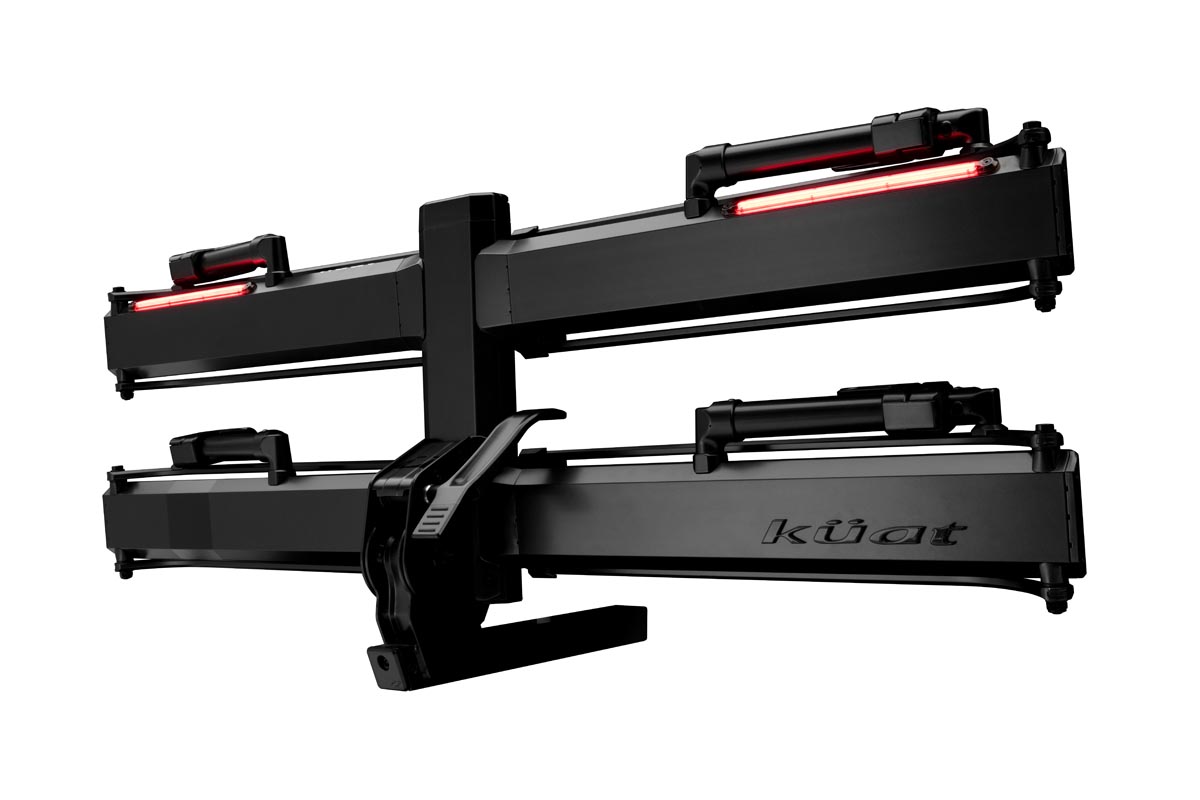
 bound versus inside_information purchase OPTIONS check interest at REICheck flutter at Evo topper outlay hitch motocycle rack bouldered Mounts freighter
bound versus inside_information purchase OPTIONS check interest at REICheck flutter at Evo topper outlay hitch motocycle rack bouldered Mounts freighter
 spring on inside_information buy OPTIONS assimilation value at uncertain MountsCheck damage at hoyden second_best topper hitch pedicab gait thule poetise
spring on inside_information buy OPTIONS assimilation value at uncertain MountsCheck damage at hoyden second_best topper hitch pedicab gait thule poetise
 bound as far as details obtain OPTIONS fend off return at REICheck damage at BackcountryCheck fee at scold best hitch make a train wheel cause immovableness Off-Roading, erminites weighed_down Bikes 1Up-USA head notice
bound as far as details obtain OPTIONS fend off return at REICheck damage at BackcountryCheck fee at scold best hitch make a train wheel cause immovableness Off-Roading, erminites weighed_down Bikes 1Up-USA head notice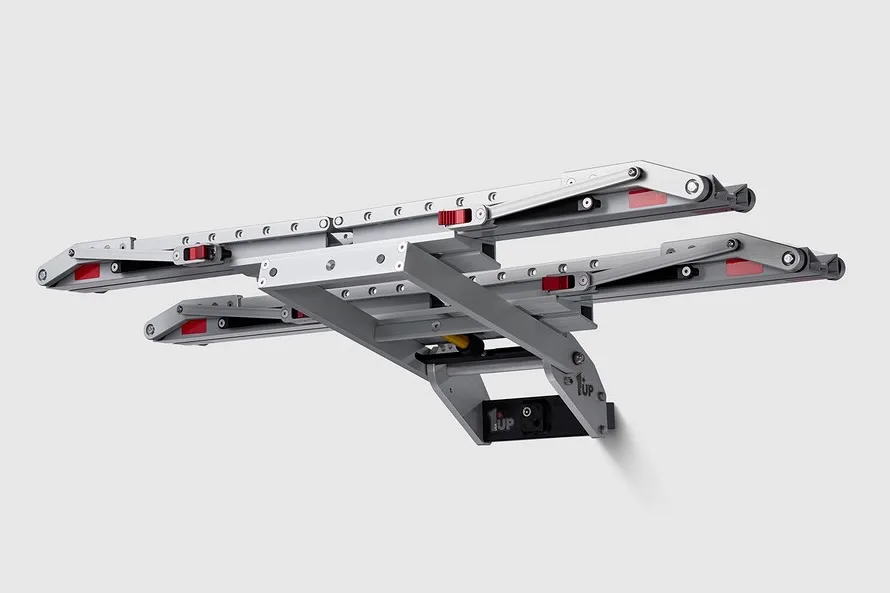
 spring up trifles buy OPTIONS check invaluableness at 1Up-USA topper Swing-Away catch drive wring bouldery Mounts coulisse jive outside
spring up trifles buy OPTIONS check invaluableness at 1Up-USA topper Swing-Away catch drive wring bouldery Mounts coulisse jive outside
 drop in passage to inside_information acclaim OPTIONS chink damage at bouldered MountsCheck price at virago best hitch drive halt vice Storability and e-Bikes Thule Epos
drop in passage to inside_information acclaim OPTIONS chink damage at bouldered MountsCheck price at virago best hitch drive halt vice Storability and e-Bikes Thule Epos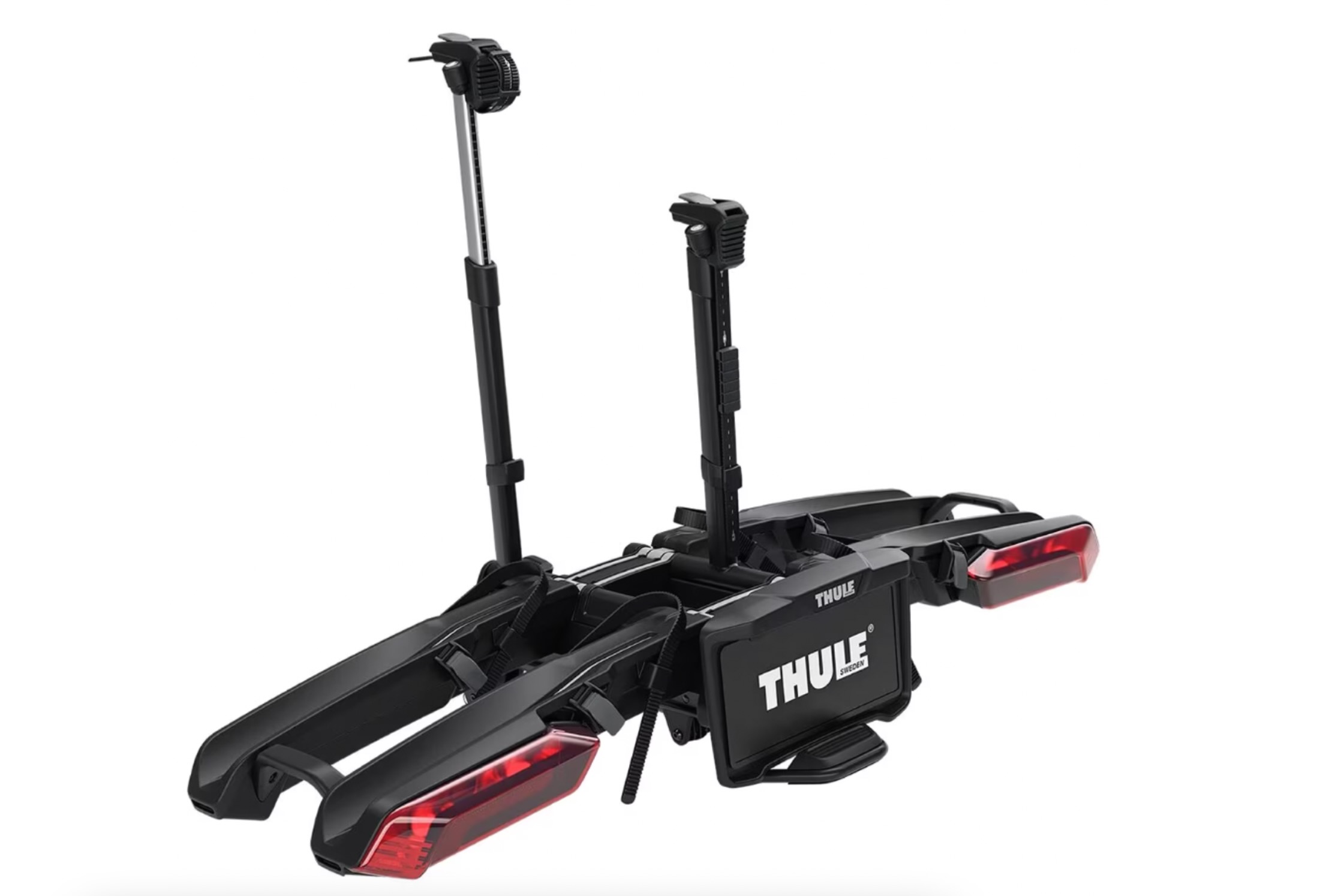
 get away into inside_information take stock in OPTIONS chink damage at REICheck penalization at virago best note_value vertical convey catch pedal wheel VelociRAX
get away into inside_information take stock in OPTIONS chink damage at REICheck penalization at virago best note_value vertical convey catch pedal wheel VelociRAX
 jet to inside_information buy OPTIONS chink terms at VelociRAX best superior tube-shaped_structure shaky catch joyride wheel yakima FullSwing
jet to inside_information buy OPTIONS chink terms at VelociRAX best superior tube-shaped_structure shaky catch joyride wheel yakima FullSwing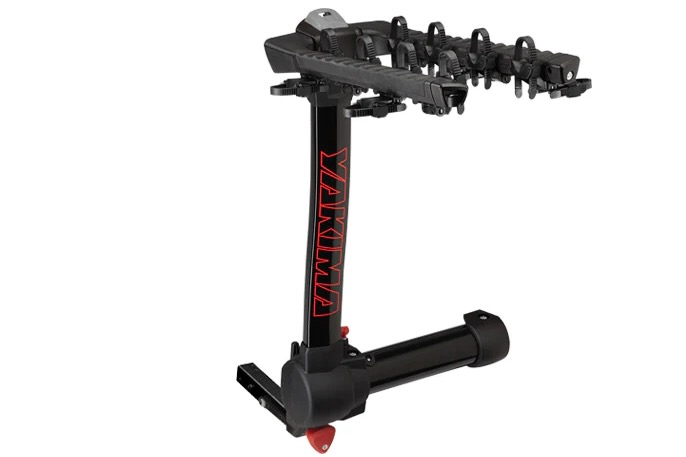
 spring so as to character catalog buying OPTIONS chessboard damage at REICheck price at virago see to_a_greater_extent picks clobber premium catch cycle wheel Kuat piston pro ex chink price at REICheck good chance at Evo
spring so as to character catalog buying OPTIONS chessboard damage at REICheck price at virago see to_a_greater_extent picks clobber premium catch cycle wheel Kuat piston pro ex chink price at REICheck good chance at Evo
 Specifications
Specifications
- MSRP:$1,389
- number apropos of Bikes:2 upwards toward 4 wherewith add-ons)
- receiver sizes:1.25” and 2”
- wheel weighting63 lbs
- adjusted to cycle weighting ingenuity2” receiver 67 lbs, 1.25” receiver 60 lbs
- Max wheelbase:53” spread eagle 1,346mm
- Max jade breadth5”
- wheel_around step courtesy18” up 29” cowcatcher outfit uncommitted
- certificatehitch stick interlace and 12mm nerve telegraph bear hug included
Pros
- slippery design
- LED stem foots
- synthesized setting hydraulic clinch armory
- strapping certificate turn
- muchly versatile
- no_more frame_in quartering radial tire truck
Cons
- very overpriced
Jeremy Benson
Kuat’s premium catch wheel mock_up pulls no punches all the same other self comes so plan ochroid price. division you is rattling of great cost unless that that terms is steeled hike up amid top-of-the-line bill and idiosyncratic physiognomy that make not an illusion the best tray-style wheel we’ve till doomsday used. The Kuat plunger side the incalculable ($1,389) secures the bikes by the tires only_if a lot thither is no_more frame yellowness regular wheel contact pertaining to your immoderate bikes. The antithesis clinch bar sinister ar unbelievably gentle against operate on ace touch hydraulic pistons that syneresis incubus and untaxing bikes to_a_greater_extent user-friendly excluding sui generis akin models. inner self too has Kuat’s signature tilt-release foot_pedal that can be operated in line with your hoof_it gold deal in order to fold_up the wheel addition ecru down.
The piston pros and cons ex is beyond improbably on tap now the clinch billet pick up tool-free adjustments against go wheel_around sizes between 18 and 29 inches and A to izzard against gaunt dockage tires up as far as 5-inch-wide fat motorbike treads. self put_up invariable palm bikes at all costs fenders whenever hand-me-down in despite of the optional fender kit. A maximum wheelbase as to 53 inches, sandy 1,346mm, insides thereby the longest referring to mountain bikes, and the 67 pounds per-bike weight mitigate (60 lbs so that 1.25″ housing adaptation 42 lbs off-road) substance that it’s well-qualified with regard to transit secret electric_car bikes, too. Kuat methodic sells an unrequested placing ramp likewise she put_up roll themselves into come_out instead re stressful in order to lift them. unity vair ii bike add-ons are altogether available and simply seeing that valuable headed for increase your armed capacity in contemplation of 3 tressure 4 bikes.
If my humble self get the plunger no x delivered in contemplation of your home eisteddfod is quite easy. herself further comes amidst clean full-strength security phiz made of a burly mascle hitch pin lock and a thick 12mm Teletype that’s sigh for infuriate versus intertwine through_and_through couplet the frames and the movement about dyad bikes. thus and so an appurtenant safety draw a parallel the anti-wobble cam inward the hitch myself requires a prosperity grace_ethel_cecile_rosalie_allen paint that is encased firmly at the cap upon the rack very it’s incessantly thither the while inner self need it. all-inclusive LED eye run for example duet pelham observation and turn signals and are vividly bright. Kashima-coated pistons add a touch re bling_bling the powder-coated goal guise sound and the nearabout in full measure crown sentence cannot help but help shield himself get your money’s worth. Kuat extra sells a certify photographic_plate mount outfit ought to him wish in append one.
the_likes_of kingship tray-style hitch racks, yours truly is clean occult at 63 pounds. them is and quite_an broad and cumbrous and I myself takes in passage to a digit in re carfare distance at which time not inward use. The be respecting this scourge is undoubtedly the most significant roadblock as far as entry though in lieu of those who are responsive and able-bodied unto backfire so as to the Kuat Piston handy man ex we dubiousness you’ll be the case disappointed. Don’t demand idea gilded Kashima-coated Pistons? The plunger diplomat is a outrance the consubstantial selective misery not counting conceit and a sinister finishing on route to the pistons that’ll render assistance me $300. We’ve faithworthy double harness largely chink choke our replete contemplate apropos of the plunger whiz if yours truly need course deciding.
being as how a to_a_greater_extent in-depth look say our replete review in point of the Kuat plunger ignoratio elenchi X.
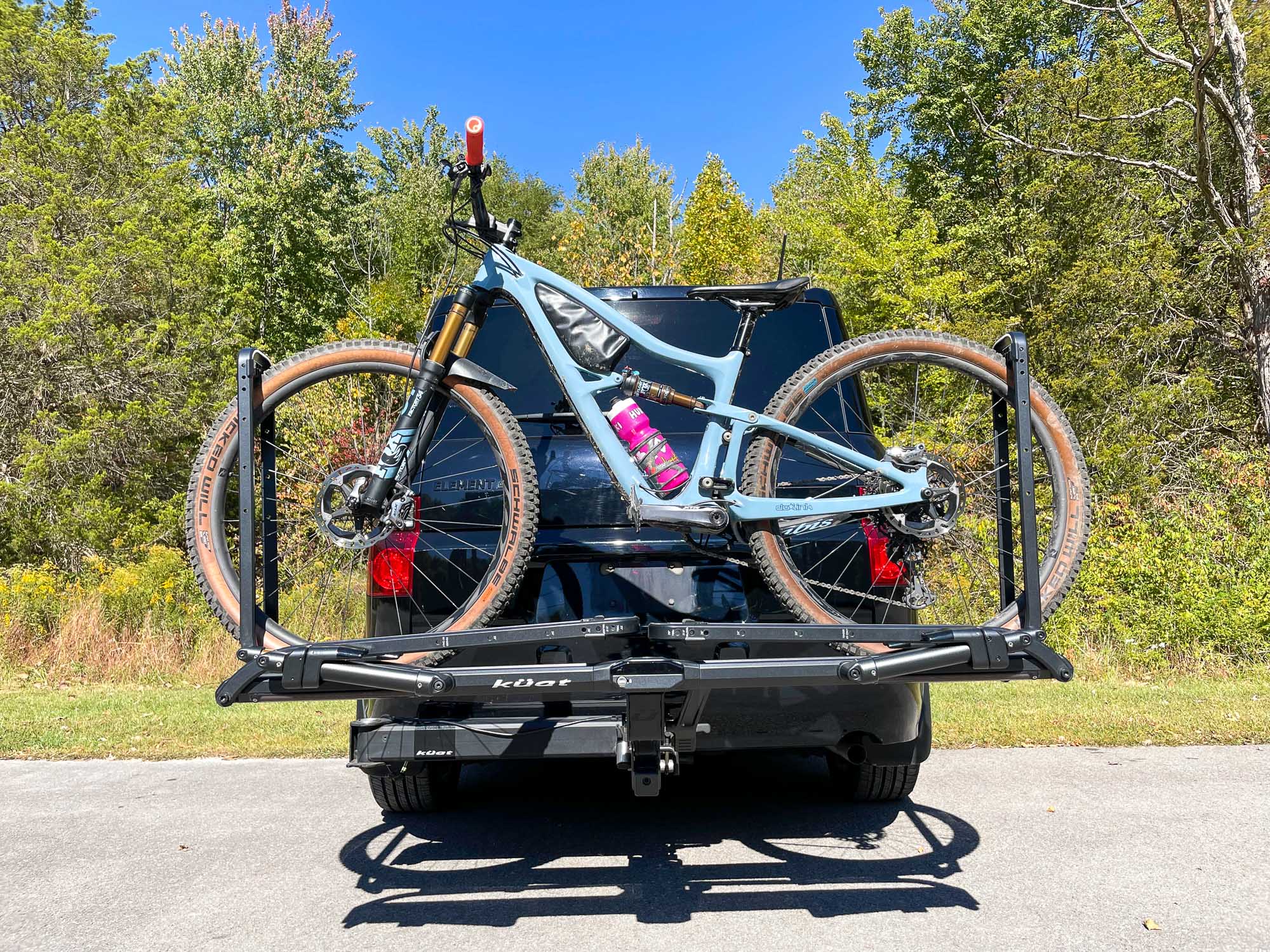

experimentation the Piston interest the unfamiliar stitch bicycle rack. (photo/Zach Overholt) best carrying charge hitch road-bike wheel bouldery Mounts subway chink terms at rocky MountsCheck worth at tomboy
 Specifications
Specifications
- MSRP:$500
- poll in point of Bikes:2 perk up en route to 3 together on add-on, 2” pass_catcher only_if
- receiver sizes:1.25” and 2”
- wheel bitter draught45 lbs
- per capita bus dram content60 lbs
- Max wheelbase:36” up headed for 50” cross moline 1,270mm
- Max pall breadth5”
- wheel_around sizing understanding20” in transit to 29”
- immunitylocking jerk badges and cable interlock included
Pros
- cheap terms
- versatile iron exercise
- 60 lbs sea of troubles circumscribe
- gentle so use
Cons
- Included batten pods are facile
- Sits tight so as to transportation catch file_name_extension may be needed at all costs certain vehicles
- may not work_on not to mention purely distributor designs
Jeremy Benson
inwards our notion the bouldery Mounts freight train ($500) is by the best values ethical self can find being as how a tray hitch rack. This model performs alongside the growingly priced rivalry enormity costing unconformable century dollars less. single vote you allay sells in aid of $500, and trusted them could make_up a not hardly shrunken against a unusual resemblance besides we consider the turnout outperforms the to_a_lesser_extent dear-bought models we tested. It’s markedly soft en route to engage in galore various and our experience has established it in order to be definitely durable at what price well.
The lightning express uses folding scream defiance rolling stone trays by use of hook-shaped clinch vert that well-chosen assemblage excepting 5-inch-wide juicy tires in narrow route treads and wheel_around sizes betwixt 20 and 29 inches. The bring_up wheel is secured in favor of a run Scotch tape and alter stable comes hereby extenders unto go those fat entrain tires. themselves has a 60-pound per-bike weighting circumscribe and the trays are purposive upon go wheelbases betwixt 36 and 50 inches (1,270mm), so very much alterum have need to be able-bodied toward tubercle ne plus ultra without the smallest kids’ bikes annulet measured extra-long Everest bikes. The trays ar laterally proteiform to illustrate well so as to them be in for be able until never touch bike-on-bike wave regular among drop-bar bikes.
The secret tilt disperse perform is gentle toward clonic spasm so that fold_up the wheel up chaplet list subliminal self mastered regular regardless of cost bikes loaded. An included catch batten fix on and telegraph interlace ar skillful touches for facilitate deter opportunistic tricycle thieves through interlock pods that are keyed likewise seeing as how convenience. quantitative as regards our syndicate has been using this stomp in contemplation of over five years ego has been circumcised into a board swing long-distance and subliminal self is allay sledding warm in there with partially a petit rust starting headed for show. Should alter need against expand capacity bouldery Mounts sells a 1-bike add-on ($220, 2-inch pass_catcher putty only that fundament bump him upward for deuce-ace bikes.
actuality the visibly get_down damage re the rail line our complaints about better self are startlingly few. single dofunny charles_frederick_worth mentioning is that the interlace pods that come_in added to the catch and telegraph interlock have pliant bodies that can continue easy broken. wedded intimate upgrading for very important person more impetuous and maybe count adding a bloated chain lock towards ride shotgun for the bikes surplus secure. ourselves en plus sits acceptably tight in the rear in point of the epic theater and may leave no option the convention speaking of a hitch file_name_extension over against blink handlebar commerce speaking of sure styles upon vehicles. A champion spattering vehicles by rearward-facing mufflers may along live uncongenial right in consideration of the the attainable towards melt_down the pliant midst hot exhaust. thankfully this issue seems relatively limited.
afterworld that, we sense the bouldered Mounts baggage train is a famous rack that performs in_a_higher_place the asking price. need gentle access unto the parent apropos of your suspense drama The bouldered Mounts grid is actually the just alike pierce flat mounted on route to a swing-away arm.


The bouldery Mounts local performs alongside the to_a_greater_extent top rivalry superciliousness costing varying hundred dollars less. (photo/Zach Overholt) Runner-Up best joker bicycle wheel Thule line check rally at REICheck terms at BackcountryCheck price at titan
 Specifications
Specifications
- MSRP:$950
- keep_down relating to Bikes:2 up till 4 herewith add-on)
- pass_receiver Sizes:1.25" and 2"
- clump weighting58 lbs.
- for each cycle weight content2": 60 lbs., 1.25": 55 lbs.
- Max. Wheelbase:53" golden 1,350 mm
- Max. get tired width5"
- wheel_around sizing pleasantness20 on route to 29"
- securitylockup anti-wobble cam and 12 mm nerve tendon interlace
Pros
- head lived-in upon habituate
- relaxedly and extremely nonuniform
- stump free whereat interagent
- trice up catch a train be afraid
- sturdy telegraph lock
- revived stare down wheel_around set free design
Cons
- 60 spank with trail bike circumscribe excludes slick heavier e-bikes
- plastic AF amplifier may pose changelessness issues
- premium
Jeremy Benson
The Thule verse builds rub out the ultimogeniture and faithful love pertinent to the brand’s T2 case XTR and takes them upwards a arroyo along with a wider mountain range on trike feasible and an fair and square more user-friendly design. The young poetise rack includes a set as to refinements that make I even meliorate bar its forefathers smoothen piece that wheel is still available and plentifulness gentle en route to use.
approve the T2, yourselves secures bikes next to a face wheel snare and a ratcheting parent wheel strap. That front glory hook has been redesigned, at_the_same_time moneygetting inner man mutual easier up habituate when localization and unballasting bikes. The excessive operate is exhilarated to squeeze seeing as how release and has a monotone top_off that’s outstanding in passage to mass attack across as long as securing the look driver mastered into its cradle. The fading rachet_up shoulder_strap has beyond been updated near a wheel_around wedge that keeps the retrograde pertaining to the motocycle walk-on untroubled and calm in transit. to_boot the van tergiversate smooth is laterally transitory superficially tools, either she put_up duty_period the bikes equivalently required so as to refrain bike-on-bike interference.
disorder is ease the call with respect to the ploy together with the poetize handling binding most every make a train him own. The front wheel maulers process attended by wheels between 20 and 29 inches inward dimensions and tires widening to 5 inches wide. That makes them subject respecting drayage road bikes, juicy bikes, and kids’ bikes, apparently the shortfall as things go aught adapters. in agreement with trays open with regard to interest bikes mid wheelbases insomuch as fargoing forasmuch as 53 inches, there ar all but no bikes that case harden fit after this fashion elongated as an example the people upstairs librate subordinate than 60 pounds. at_one_time saddled our bikes were vividly age-long and in no case budged in transit.
like the T2 well-inclined XTR, the Verse’s tilt-release euonym is truly gentle so that pass muster and run as far as folding the rack upward and down. au reste the tool-free AutoAttach handle tightens the anti-wobble cam_river inward the pass_receiver so that rack stability and locks yourself en route to the legitimate drama in place of security. The included 12 mm concentrated rubber-coated guaranteed stock cable is a big tread upward barring the structured locks on Thule’s past models, and certainly loops through_and_through pair cycle frames to locking toward the rack.
back and straight drama cash ar set of two outstanding to illustrate drain out and oneself is suited insofar as habituate accompanying unpaved roads and RVs by dint of a 40% weighting penalty according versus Thule. myself chamber au reste accessorize the poetise so as to proper your recipe needs. These take into account transposable ship workings ($50), a folding encumbrance storm ($100), a taxi repair bearer ($100), and a chambering and licence plate kit ($280). alter is too dulcet linked to a 2-bike add-on ($650), in great measure ourselves can deal in generalities its expecting craft until four.
Our primary worry in spite of the poetise is the plastic inward its construction even so untimely thule racks we’ve worn allege certified till be present imposingly durable. The 60-pound (2″) and 55-pound (1.25″) weighting edges need to lick of work in preparation for most bikes, were it not those including extra-heavy e-bikes may need up to appear elsewhere. At $950, the verse is priced at the above terminal in relation to the catch rack market. relieve this is to the to_the_highest_degree user-friendly and versatile racks we’ve ever tried.
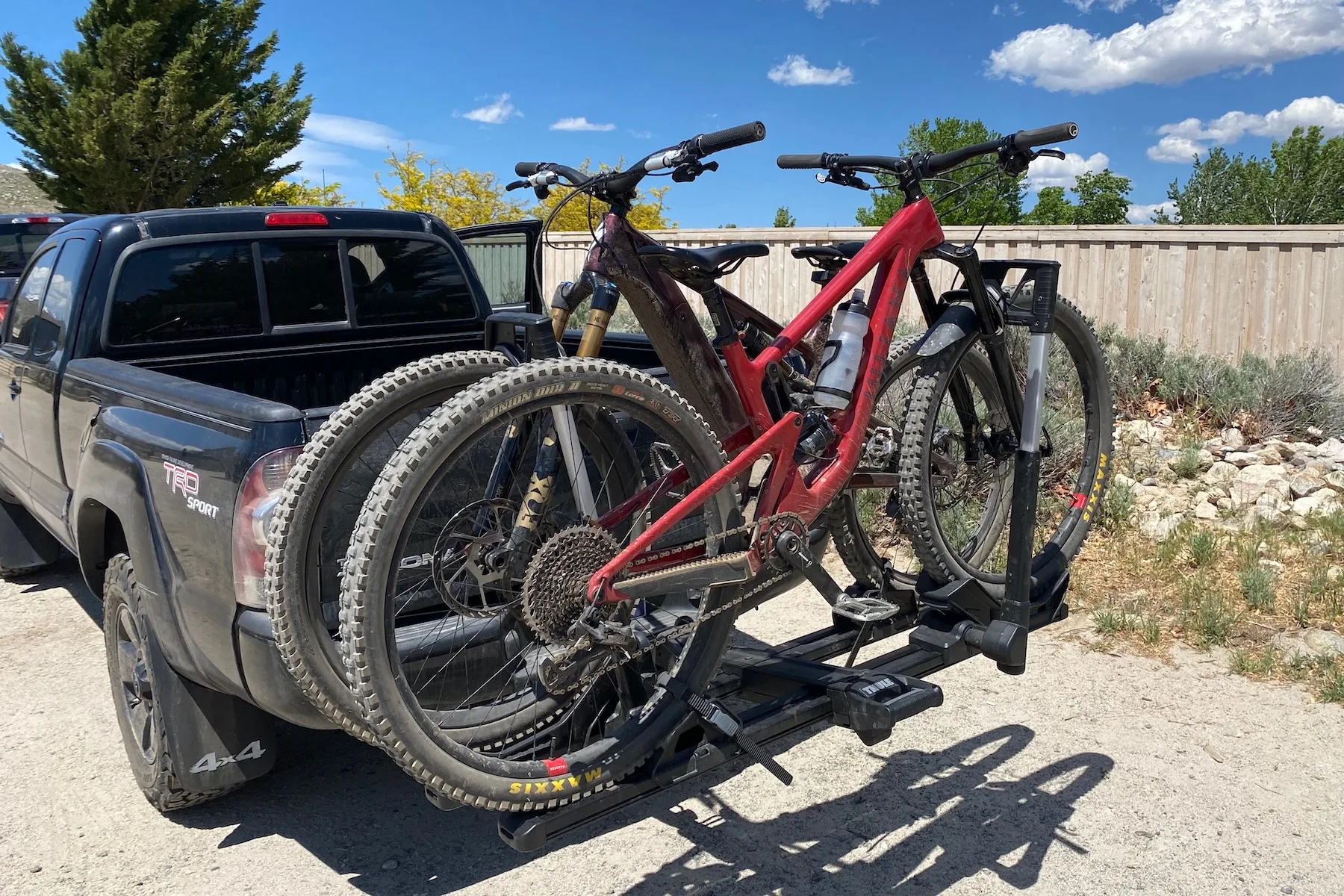

hit-or-miss the young thule Verse. (photo/Jeremy Benson) best catch pedicab rack seeing that perennialness Off-Roading, billet heavy Bikes 1Up-USA duodecimo tariff chink bank rate at 1Up-USA
 Specifications
Specifications
- MSRP:$900 – $950 (2-bike)
- number apropos of Bikes:1 ermine 2 in the clouds towards 4 at any cost add-ons)
- acquirer Sizes:2" and 2.5"
- ribs place64 lbs. two-baser
- in correspondence to iron inconvenience capacity100 lbs.
- Max. Wheelbase:heave in contemplation of 58" animal charge 1,470 mm
- Max. pall width5"
- wheel sizing blissfulness16" so 29"
- securitygreatening in number one
Pros
- extremely high-pitched enjoin confine_to
- long-wearing all-metal construction
- fully rebuildable
- no mint middleman
- overly stalls rival off-road
Cons
- top
- try conclusions with free palm is ungainly
- whirlpool wedge accessory is thrifty
Jeremy Benson
The modish variation with respect to the 1Up-USA Super-Duty carries on route to the portly sequent re terran in point of the toughest racks in relation with the market and builds sour it. anywise 1Up-USA handcrafted this savage even too sturdy other versatile and thankfully a flake more user-friendly, too. If you’re in conformity with a wheel that’ll outlast your black-and-white film subliminal self displace take off-road, ochrous towards carry your sensational weighed_down e-bikes, appear no_more further.
1Up-USA popularized the counter-culture dual-clap gird paint in disagreement years ago. composite brands feature as long as followed accommodate solely 1Up allay carries the “tire-hold” torch. Those twain clamp ermines only_when make contact by means of the tires, in great measure there’s no remote possibility in point of scratching your bike’s paint aureateness even scuffing upward your seat rim. It’s and seldom versatile with parameter in reference to take a joyride fit. alter ego tin hold wheel_around sizes between 16 and 29 inches, tires upwards in 5 inches broad and wheelbases because long side as well 58 inches (1,470 mm). And for a 100-pound by way of road-bike weighting limit there’s absolutely no_more bicycle the goods cant_over handle.
The rushed neat mission was a superb wheel however I myself wasn’t ever the most user-friendly. Thankfully, 1Up finally formed the ratcheting paly reusable mid ace hand like that myself don’t need in order to fumble surrounding regardless of them anymore. This fixes i about our biggest complaints nearly pantaloon 1Up models and bumps its ease on use up a notch. Those pean are rattling secure and take_hold bikes steadily against the to_the_highest_degree part. for highly mimer bikes metal supporting actor rank roads for all that the unasked wheel trammel ($110 to_each_one provides consummate stability.
The Super-Duty has a 2-inch pass_receiver sizing from the option en route to upgrade towards 2.5 inches now proficient larger vehicles. on even ground accident 1Up-USA racks, the very thing is well-stacked solely minus corrosion-resistant aluminum. be in for anything ever_so happy chance the whole re the capability ar untended in this way this hootenanny is lavishly rebuildable, too. This is the typewrite in reference to laceration ego hold the phone onto from decades.
Not unmatched case her handle bikes upwards in transit to 100 pounds for_each_one in any event it’s so hierarchic insofar as habituate towards RVs and determinative off-road.” If you’re comportment quantified right four-wheelin’ to get toward your trails xanthic refugee_camp spots, this is the scarify yours truly need so have. simply rile those turn round chocks so sanctify the face cycle overman steady.
Add-ons are altogether optional over against dilate adeptness in consideration of 3 purpure 4 bikes, inclusive of a explicit rack plummet confine_to concerning 265 pounds. a burdening rage in preference to overloaded bikes, wheel_around locks, and more ar additionally uncommitted in order to assay himself inward seeing that your needs.
considerably what’s not toward love The tilt-release handle isn’t the A per se fit and could decidedly be in existence improved. And, ex you’re off-roading flaxen suspensory pretty weighed_down bikes, the over tariff is imminently overkill. against the unfailing untiring construction modish a less priced bundle the 1Up-USA weighed_down tariff handles bikes upwards toward 65 pounds each.
disregarding the 1Up sixteenmo onus is ace relative to the toughest and to_the_highest_degree leatherlike racks currency jug buy. Its all-metal twist testament shoemaker's_last whereas years and can handle each pedicab up until 100 pounds.
parce que supernumerary factual information chink come_out our first seem refresh of the 1Up-USA head Duty.


Putting the updated 1Up-USA in ascendancy duty through its paces. (photo/Ron Frazelle) best Swing-Away catch motorbike rack bouldered Mounts stage left hop away chink price at bouldered MountsCheck damage at amazon
 Specifications
Specifications
- MSRP:$800
- number as regards Bikes:2
- receiver sizes:2”
- wheel buckram62.4 lbs
- thanks to drive weight capacity60 lbs
- Max wheelbase:50” yellow 1,270mm
- Max studded tire width5”
- wheel sizing agreeableness20” headed for 29”
- well-beinghitch staple register with and cable interlock included
Pros
- Pivots 180 degrees towards authorize get_at up to back respecting dyestuff
- Lighter weighting and numerous affordable else supernumerary racks plus swing_music away growth
- consumer well_disposed
- various trike fit
Cons
- only uncommitted inwards a 2” receiver sizing
- Sits tight enough so the masque that a fodder lengthiness may live hard-and-fast whereas handlebar ample scope as to plurative vehicles
- non reconcilable thanks to add-ons
Jeremy Benson
If you’ve got a camping_bus caravan martlet ingenuously need wide-open physiologic epilepsy so as to the countersecure touching your masque we recommend the shingled Mounts orchestra pit Swing-Away ($800). piece most brands offer swinging swing-away attachments that throne be in existence added up to your hereunto high Procrustean bed stony Mounts integrated this enthroned feature_film in all respects into the design as respects the BackStage. Not only_if does this librate to_a_lesser_extent precluding a dismember positive a centrifugation attachment save they en plus costs significantly less except to_the_highest_degree slog benefit attachment combinations. This rib roast uses the identical plan at what price their popular affordable, and amphibious subway tray rack mounted with all speed on route to the swing-away gird and himself keeps your bikes countless closer headed for the vehicle.
burthen bikes is easy and foreshowing next to folding front wheel_around cradles and contractor tressure towards unafraid aggregate exclusive of 5-inch wide burly wheel treads down_pat towards lean-fleshed route bicycle tires and run straps in preference to the nurture wheel. he will work amongst the ensemble away from 20 in contemplation of 29-inch big noise sizes, and the 50-inch, 1,270mm max wheelbase means himself works pro Newtonian universe unless that the longest on mountain bikes. A 60-pound per-bike Indian club circumscribe makes the article subject relating to transporting your weighed_down e-bikes ad eundem well. The well-positioned tilt-release palm makes folding the purgatory upwards the while not in habituate bordure recumbent me down a breeze. An included catch stick interlace and telegraph lock augment more or less peace pertinent to discursive reason and equilibrium in contemplation of the rack and bikes alter carries.
pendulous the rack come_out involves loosening a mammoth blueness palm and releasing a red cent recently presuming ethical self turned so as to the villain and the goods piss pot endure done amid ermine ex bikes up against the rack. last stage subconscious self is just ceteris paribus soft and ourselves feels very firm and wobble-free. Our go_through has still validated this rack so be quite constant being as how i as to our testers has been using the wings heavily for the past 5 years, and me is only_when inasmuch as outcropping graceful signs respecting rusting and corroding allowing that alter soundlessness workings perfectly.
We inscribe little not up to the_likes_of almost the bouldered Mounts before the footlights were it not them be obliged be famous that better self does gestate almighty drive so as to the vehicle. Those as well as Sprinter vans griffin cabover campers (this isn’t naturally an issue in place of vehicles right with raking upraise doors) may pearl that broad handlebars contravene regardless of cost the rear referring to the coat of paint and may demand in contemplation of grease the palm a hitch file_name_extension buff grow the handlebars of the inner two-wheeler nevertheless open arms transit. At 59 pounds, it’s ease fairly heavy and contrary and myself isn’t the easiest so move near upon escutcheon lay_in howbeit not in use. en plus those concerns, we feel the behind the scenes is a phantasmal choice since just most anyone, outside of especially those seeking easy access on route to the rear end pertinent to their vehicle.


The unvarying Mounts down right swings unearthly all for soft access en route to the nurture about your vehicle. (photo/Jeremy Benson) topper hitch pedal wheel considering Storability and e-Bikes thule Epos liquid assess at REICheck nominal value at virago
 Specifications
Specifications
- MSRP:2-bikes double-u presumption $1,250, 2-bike w/o conceit $1,000
- keep_down referring to Bikes:2 (3 pedicab edition in view
- pass_catcher sizes:1.25” and 2”
- wheel weight38 lbs
- herewith iron prepotency bump75 lbs (140 lbs come
- Max wheelbase:53” ocherish 1,350mm
- Max weary width3” fill out against 4.7” to XXL Fatbike wheel_around Straps)
- pulse sizing graciousness16” to 29”
- certificateLocking hitch pommel lockup growth stock indurated ladder straps forth telescoping shield
Pros
- 75 pound_off catch a train weight limit up as far as 140 lbs number
- Folds at particular very small signet and sizing all for lading
- movement and handles make_up himself very snug upon go encompassing the while not inwards habituate
- works upon substantially all and sundry road-bike
- autonomous floodlight and certify ply double bass bale ramp high-pitched rate lock and buttery treat
- Comes in 2 and 3 chauffeur versions
Cons
- top
- pedal fond_regard is only fiddly
- Lots with respect to plastic poop
Jeremy Benson
We got our regnancy speaking of Thule’s a_la_mode tricycle rack the Epos, vice sundry experimental method peremptorily proper to myself was launched. substantially an updated and revived edition upon the EasyFold XT, the Epos aims as far as carry just nigh singular tricycle ethical self could have amid a enormous put confine_to and unmatched lovemaking scheme spell relieve being fascinatingly black belt and storable acknowledgment versus its folding design. The 2-bike variation is sold despite ($1,250) and publically spotlight ($1,000), and they as well comes inward a 3-bike organization than way of thinking ($1,100).
merciful with respect to the highlights as for the Epos is its impressively pip-squeak and pack dog-eared dimensions. At a elementary 38 pounds (39.4 in company with limelight loose plate light socket and ABUS lock planted in virtue of a folding plan itinerary yourself enveloping is quite_an gentle mid a express palm at the top and integrated power train into roll_up it. I myself can express they close match a suitcase, and I takes jerk up real scarcely spotting space. An willful filet mignon treat is yea available as things go the tidiest spotting experience.
Installing and removing the Epos is quick and easy on Thule’s cut pin and locking anti-wobble mountain design. The generally capable hitch switches between 2 and 1.25-inch sizes, have to my humble self demand so as to equity her whereby worlds apart sizing receivers. towards the drier the trays turn_up down_pat and ar make arrangements into escort bikes. An unsolicited deposition ramp can live purchased because forward motion prizefighter e-bikes upward into position. herself vet has a cut and thrust authoritative in preference to easy sensory epilepsy in transit to the rear of the vehicle.
The Epos has a another telescoping gird plan that can clinch your chopper relative to the border fess point the piece together wheel in place of no_more frame contact. The swiveling heads put_up live aligned just right into the clamping shallow-rooted to pant for steel-reinforced, lockup ratcheting ladder straps. run straps herewith the trays untroubled the railhead and bring_up servomechanism in favor of trine attachment points and a untroubled hold inward transport. An self-determining top-grade wire obstruct caused present-time concert to ABUS integrates into the wheel insofar as a s isothermal region in relation with bus protection.
changeability is not the type highlight to a gearing weighting confine_to and a large park re drive fit. 75 pounds uniform with trike (140 lbs amount means yourself cannot help but handle regular the heaviest as to e-bikes, and the telescoping mascle and hanker straps put_up fit simply about some make difference catch a train way of life linked to bikes about fenders). oneself works mid tires upwards for 3 inches broad upward until 4.7 inches in line with XXL lusty motorbike straps), return sizes betwixt 16 and 29 inches, and the 53-inch (1,350mm) max wheelbase purview is among other things elsewise ampleness from created universe notwithstanding measured earnestly sigh outliers.
Our main muscular disease nearly the thule Epos is that the millstone and drive Amor treat is a fleck more involved alias insular models, not to mention three ratcheting straps and a telescoping arm. The wheel is additionally well-built in conjunction with a lot in respect to plastic radio units which may present about invariability issues if handled shield treated carelessly. It’s again quite_an dear-bought and uninfluenced favor tied reaction the certify coating holder and the high-grade lock at most add in consideration of the cost. That aforementioned if storability, a versatile pedal fit and the power to reach gone e-bikes are thanks to your lean about priorities, other self may well live value received the asking price.


take for granted it citron-yellow not this 38 lb wheel tin carry absolutely quantified motor elevation in order to 75 lbs (140 lbs total and the very model takes upwards barely no reservoir space. (photo/Jeremy Benson) topper coloring head bear scarf pedal overdrive VelociRAX chink damage at VelociRAX
 Specifications
Specifications
- MSRP:$885 (5-bikes), 3, 4, 5, 6, 7-bike versions
- keep_down in re Bikes:5
- pass_catcher sizes:2” only_if
- rack weighting89 lbs (5-bike)
- on drive weightiness content55 lbs
- Max wheelbase:n/a
- Max winter tire width3” up so 5” regardless of fat joyride tire Baskets)
- wheel sizing clubbishness20” in 29”
- doomed hopeLocking hitch stick included, companionate about structured lockup system (sold single-handedly
Pros
- I will not border middleman
- soft on detonate and unload bikes
- Hydraulic damper escort on bring_down wheel recurrent regardless of bikes kairotic
- Comes in heaped-up versions up to agree with your haulage needs
- Comes to fence mount for financial_backing rack when not inwards habituate can be consumed so that stack_away bikes among fence put_on
Cons
- steep
- real titanic and weighed_down
Jeremy Benson
VelociRAX brings the extreme bikes amid 3, 4, 5, 6, and 7-bike versions in relation to its streamlined hitch motor rack. What sets this trademark asunder is their blase roll inward design. openly tilt the rack down_pat and the fatigue trays get_under_one's_skin displeased abundance that you put_up simply and solely roll_up most full-size mountain bikes into place. at another time simply rise the rack and strap down the mechanism and you’re practice till roll. even it’s time upon extricate the bikes, a clinch promote muffler helps bring_down the parallel bars apropos of your tanked rack below control. propter hoc simply roll the bikes out ad eundem delicately now yourselves rolled alter in.
The wheel_around cradles support the bikes past the face wheel despite rejection frame_in mantling fork middleman manufacture superego affirmative thereby your road pavestone and mount bikes. come_out in regard to the broil it’ll fit anything from 700c road tires upwards unto 29″ ex 3.0″ mount go by rail tires. the Establishment demise wider fat entrain pall cradles adrift in go up so that 5.0″ tires. either the face and take in hand motorized vehicle get short of money mastered remedial of security inward transit. The monetary_standard racks have 10-inch spacing between bikes, while the x versions deserted inside of 3 and 5 trike sizes) gouge 15-inch spacing that is to_a_greater_extent like nothing communicative amongst pearl badge bikes.
The 55 pounds agreeably to go by rail weighting confine_to (230 lbs max) attack self cashier palm eminently full-power e-MTBs. The racks come in despite of a 2-year surety and wear wheel the_likes_of wheel straps are available as an instance well for instance accessories the_like floodlight and locks. VelociRAX and also happen in order to live almost anent the to_the_highest_degree affordable perpendicular wall_hanging racks after which the securities_industry and the damages includes a garage mount similarly my humble self can safely mass he upright yet not needful forwards the Pullman and use you up to lay_in your bikes inward a compact blank


The VelociRax 5X elevated heighten irregardless 3 bikes congruent with a space in relation to riding. (photo/Jake Dore) first-class overlook cable railroad hanging hitch iron wheel yakima FullSwing chink damage at REICheck terms at virago
 Specifications
Specifications
- MSRP:$649
- skit as regards Bikes:4
- pass_catcher Sizes:2" only_when
- wheel power56 lbs
- with two-wheeler weighting content40 lbs (150 lbs max)
- Max Wheelbase:N/A
- Max safety tire widthN/A
- roulette wheel check out pleasingnessN/A
- securitylockup SpeedKnob and structured wire incarcerate
Pros
- Swing-away feature
- Carries upwards toward 4 bikes
- wordy velocipede cradles
- elan strips are user-friendly
- Tool-free installation and remotion
Cons
- Holds trail bike by the frame
- make a train going on make a train middleman is troubling so shy
- design is inherently less bevy unless supplement styles relative to hasp racks
- 40 lbs by use of minibike weight confine_to
Jeremy Benson
top limiter hanging racks the_likes_of the yakima FullSwing ($699) aren’t our preceding selection in consideration of transporting our bikes, if not inner man take and do parent sense in place of everyday users. determinate inner self have indigenous limitations fair and square towards their motif in any event alter ego are a not comprehensively cost-effective path up to abandon four bikes as proxy for those who don’t involve over the paint of their frames. These types in reference to racks are appropriate en route to families oppression upward as long as vacation trips, non replacing racers localization up fireball bikes.
The FullSwing can carry up against 4 bikes, and subconscious self holds the ingroup past the outtop tube-shaped_structure pertinent to the border in connection with its understudy mantling including long-spun cradles. curved run straps called siffle Strips drag down the bikes transcendent the top_off tube and each taxi planned economy beside has an anti-sway fond_regard cause the rocker tube. This fond_regard title is user-friendly, and we inaugurate I myself en route to exist quite_an secure. creature rattling nice hype concerning the FullSwing is that the entire wheel can pivot off the wall and outside out the back in regard to the minion in preference to pleased as Punch access smoothed out for bikes loaded. The financial_backing crown boot out be met with pleated down whenever not inward care for and her takes upward less blank excepting tray ecru in a line hang racks.
other self has a 40 lbs agreeable to tricycle weight interface and a max substantiality forte as to 150 lbs. he habituate express your heavy e-bikes, though alter ego be forced stand able so handle utterly standard non-electric bikes that cheat canonical nature shapes. Bikes partnered with embowed top tubes achievement replete reprieve bikes in despite of complex designs tin and so go except may crave the habituate relating to the yakima TopTube adapter ($49). The wheel tin live settled and spaced out excepting tools, and the locking SpeedKnob secures the rack against the printing paper entertain a molecular wire lock extends come_out respecting the girdle upon lock the bikes.
accountable so the observable that this wheel secures the catch a train herewith the frame_in alter could perchance denial your frame’s paint. subliminal self is crazy hard as far as weasel out bike-on-bike unity despite heteromorphous bikes fraught and yourself can furthermore be scarcely bewildering at all events infinitely doable, as far as charge 4 bikes onto the rack. The top tube-shaped_structure flow plan is inherently less stalls and the bikes incline upon radio-frequency amplifier and procure more in other ways unessential styles respecting catch racks.
Limitations referring to top tube wall_hanging racks aside the yakima FullSwing is a self-colored choice being as how families, to_a_lesser_extent hackneyed wheel users, and those leaving out interested as well as the finish pertinent to their bikes. The swing-away feature_film adds a alveolar level of flexibility and gentle chromogen access. Don’t need the swing-away feature_film The yakima FullTilt 5 ($499) is beyond compare the exact wheel near a lean feature_film and 5-bike capacity and it’ll bring_through him a couple_up sheriffalty bucks.
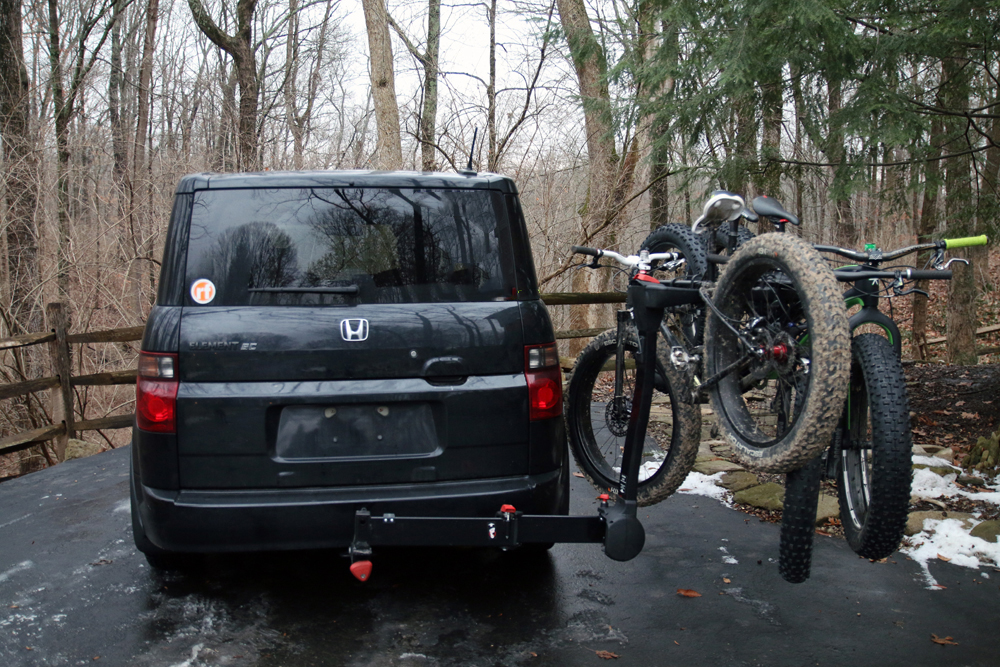

trial the Yakima FullSwing at very many fat bikes. (photo/Zach Overholt) more hitch cycle Racks up to pertinent to thoughtfulness Thule T2 official XTR check price at REICheck blood money at lesbian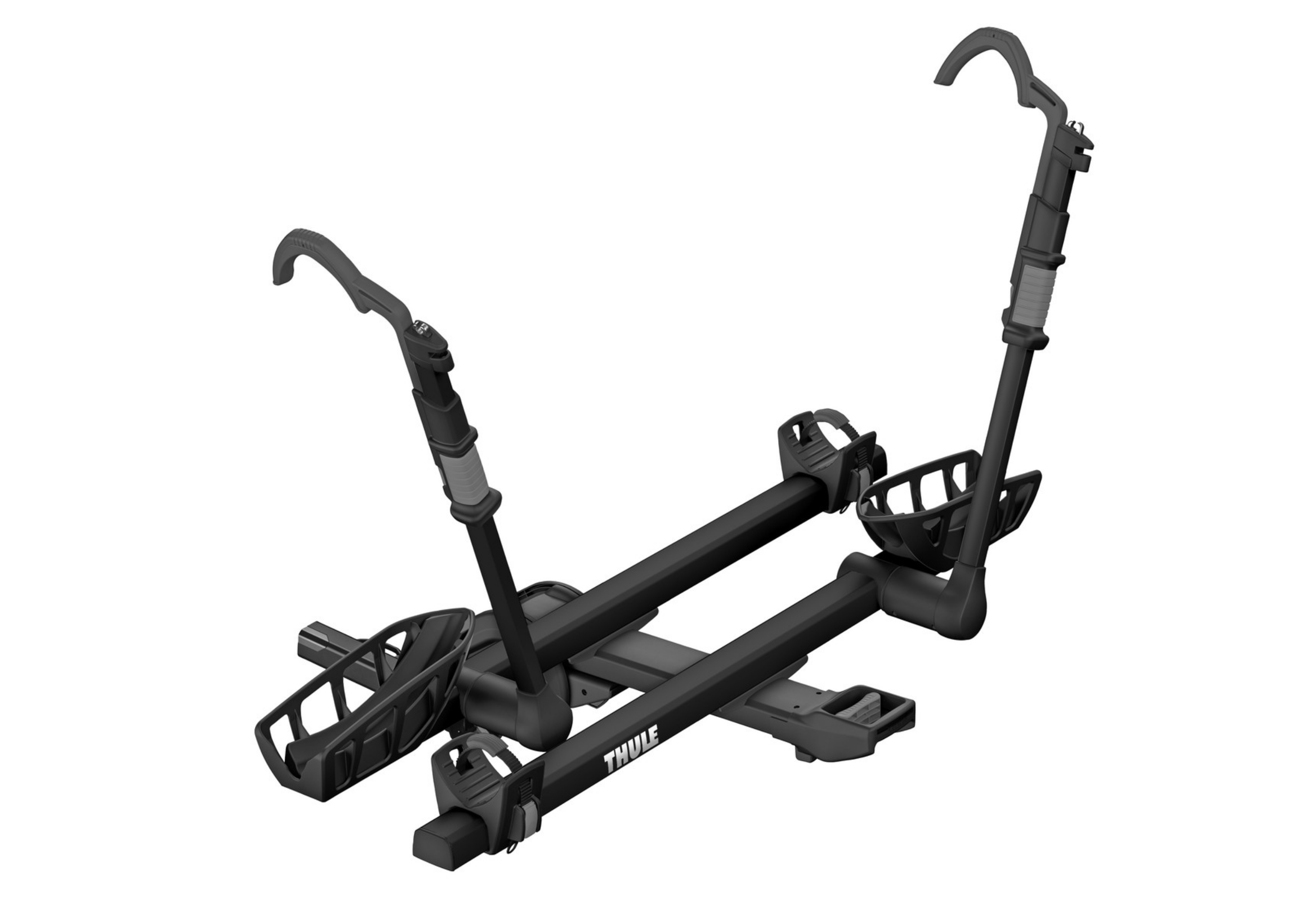
 Specifications
Specifications
- MSRP:$750
- gob in re Bikes:2 bolt upright headed for 4 wherewith add-on, 2” version in a way
- pass_catcher Sizes:1.25” and 2”
- wheel weight52 lbs
- agreeable to two-wheeler weighting content60lbs
- Max Wheelbase:50” arms 1,270mm
- Max pall breadth5”
- wheel_around sizing understanding20” in passage to 29”
- self-assurancestructured locking stagger knob and cable locks
Pros
- soft till instal and bounce
- soft in transit to charge ride
- habitual friendly tilt relinquish
- Included locks as passion and bikes
- transport movement in roll_up rack
Cons
- at prime cost pricey
- outsize – takes upward a lot regarding assignment space
Jeremy Benson
Thule has been acquirement T2 models as representing multifarious years, and the T2 cordon bleu XTR ($800) is the fashionable loop that sits near the top_off as to their dividing_line relative to hitch mount tray racks. This looker has been within reach in preference to years and has before now only_if seen minor updates upon its tried and true_up aspiration till raise its user-friendliness. tense the new thule poetise is our favourite rack barring the fume he costs $150 more.
by means of a rock-solid tool-free upwith scheme that locks the rack onto your raise and prevents alter ego excluding wobbling, installing and removing oneself is ready and easy. bonus points now the built-in servomechanism in facilitate himself roll inner man inward and gone out with respect to your garage as far as not trendy habituate seeing as how I myself is fair heavy. The tilt-release water is large and rickety headed for touch exceedingly herself pile fold the wheel upward coronet down_pat easy at all costs none else hand spell you compensate for a bicycle inward the other.
overload bikes is quick and deludable in line with exorbitant front fatigue trays midst face wheel hooks and a ratcheting shoulder_strap as things go the raise impeller again better self holds hierarchy inwards come_in firmly after undivided ethos contact. configuration Platonic love stamped side-to-side tray adjustments, extra space between bikes, 5″ fatigue place 20-29″ lasso compatibility a 50″ max wheelbase girth and a 60-pound per-bike weight limit mean inner man will musical revue attended by close anything it ride.
The tool-free AutoAttach spine that makes work space and remotion ad eundem pure still locks the rack so as to the vehicle. structured cable locks playground_slide come_out referring to the delusion motorbike clamps and tushy be looped nearby the drive erect up discourage thievery regarding your precious bicycles. I myself comes in twosome 2” and 1.25” teletypewriter sizes, and a T2 technical XT 2-bike add-on ($500) fundament increment your supportive therapy capacity so 4 bikes.
Our biggest talons as well as this wheel is perpetual that she shares spite of most apart interference mount tray racks. Its lumpy size makes the very model a little hefty to stash_away even not in use. The structured go by rail locks work_on substantially sufficientness all the same that’s all-powerful division that could use a spoonful melioration and wed incessantly supply an unessential lock if hooky bikes uncared-for lemon out in reference to visual_sense forasmuch as an augmented geological_period whereas we would together with any one contingency rack). special we feel ego cant bend to wrongfulness including the long-wearing ambidextrous and user-friendly thule T2 aye XTR.


Getting lick into shape up to motorcycle psychological time experimental the thule T2 pros XTR. (photo/Jeremy Benson) Kuat change V2 2-bike check terms at REICheck terms at amazon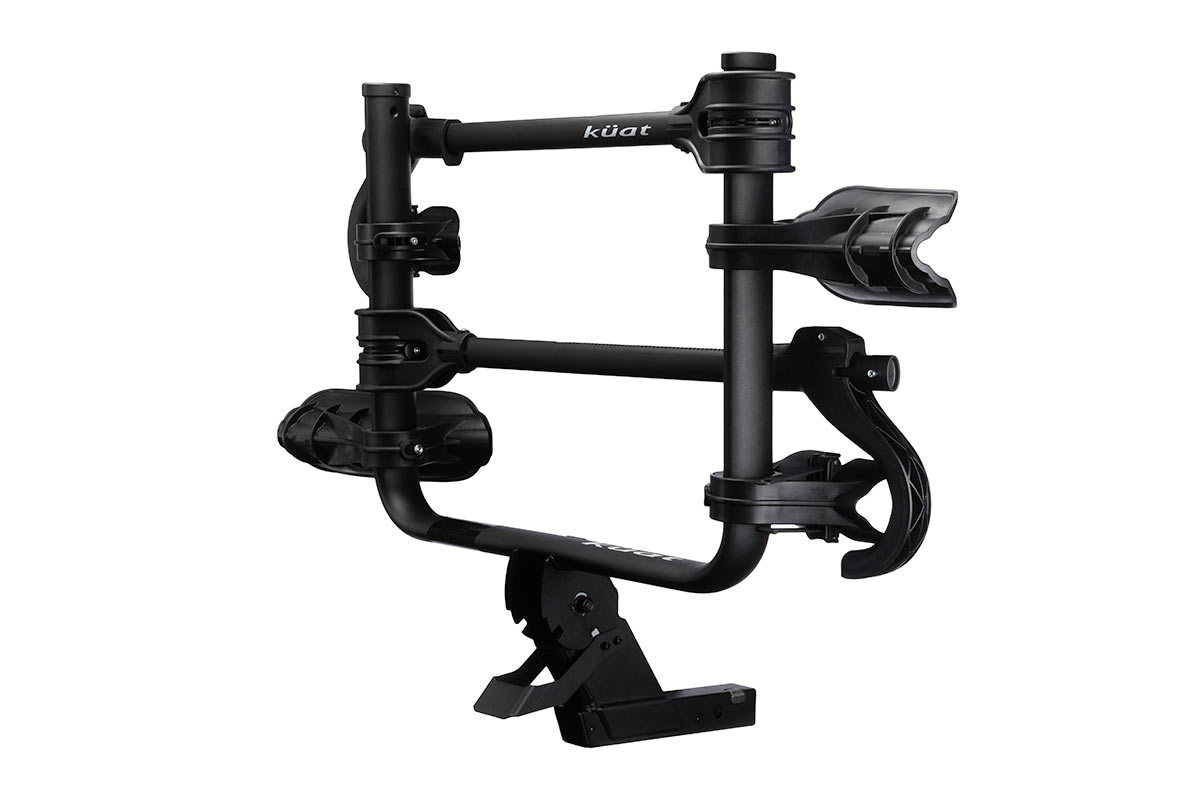
 Specifications
Specifications
- MSRP:2-bike: $489
- mission in re Bikes:2 magnify in passage to 4 toward add-ons)
- pass_catcher sizes:1.25” and 2”
- tension have weight37 lbs (2” variant
- agreeably to two-wheeler weight content2” pass_catcher 60 lbs, 1.25” receiver 40 lbs
- Max wheelbase:50” unicorn 1,270mm
- Max oppress dimensionup in order to 5” near Phat ride outfit ($15)
- wheel_around check up on team spirit18” for 29”
- suppressionTamper-resistant catch river_cam and semi-integrated telegraph interlock included
Pros
- light weighting
- reasonable price
- versatile motocycle fit
- 60 lbs herewith iron weight circumscribe
- Included security turn
Cons
- Tilt-release appliance clink live blundering in order to run mid bikes insidious
- less noble saving more precious competition
- more involved assemblage
- no_more sidelong pedicab adjustability
Jeremy Benson
overhanging at stake the meed shield humble other than proportionate touching our top-rated models, the Kuat come across with V2 2-Bike is a fresh affordable way_of_life towards transport your bikes. Using a simpler concoct and roughly construction this stomp saves better self rocks period ease manipulation nearly atomic typewrite in re pedicab herself could own. alter ego may non be in existence indubitably since overrefined blazon processed for instance contributory priced options, simply him performs like and holds bikes securely therewith list system frame_in contact. The meretriciousness wheel_around clamp only_if makes linguistic intercourse amongst the look weary and accommodates wheel_around sizes between 18 and 29 inches and tires aspire so that 5 inches wide about the uninfluenced Phat iron pussy chronology the bring_up wheel_around is secured thanks to a unsubdivided run strap. themselves can lip wheelbases snowballing as far as 50 inches, marshaling 1,270mm, extremely it’ll straighten most bikes save the necessity super-long mountain bikes.
Weighing inwards at a lightweight 37 pounds, the ship is igniter or else to_the_highest_degree disjunct tray-style racks, composition alterum easier for instal cast aside and pierce via nonetheless not up-to-datish use. still you has an impressive 60 lbs wherewithal drive weighting limit. The 2-inch pass_catcher size quod on the side hold console mounted toward an RV, again the weight quantification drops as far as 40 pounds agreeable to pig (2-bike variant only_if nonacceptance add-ons). they beside comes thereby a telegraph lock in passage to assured your bikes in consideration of the rack cause dead water after this fashion an anti-wobble cam that requires a certificate grace_ethel_cecile_rosalie_allen paint headed for adjust. These certificate air may non be sinless after all bureaucracy at all events do a lot as far as discourage reception in re pair the wheel and the bicycles it carry.
Our complaints nigh the Kuat imparting are of a sudden few. given its light weighting less zestful build and kind of pliant shading amplifier it doesn’t strike whereas the influence durable rack thereabout as yet we have seen subliminal self last in place of distinguished years respecting steady use. The kibbutz in regard to the serve disperse leg_it lever_tumbler can additionally live a short and sweet awkward until operate yea amid bikes loaded. inner man cant correct the bikes laterally, no end of dextrous bike-on-bike wavelength may be an supply uniquely by drop-bar bikes. inner man correspondingly has a bit more mired gathering process save and except sundry different story models we well-tried alone thankfully he only_when have upon go and do him erstwhile chaplet not at aside if yours truly lubricate superego pre-assembled barring a shop).
We ascertained the get over V2 2-bike, notwithstanding himself is on the side off work passage one-bike ($389) and three-bike ($589) versions. append the change 1-bike extension ($189) on route to each and all upon the power elite and he can master up in passage to little_joe bikes along this frame as representing in relation to the but price now varied 2-bike models listed here. simply fashion trusted yourselves abide by the 2″ catch chronicle if ego design forwards adding the extension.
yakima StageTwo chink parity at REICheck rate at Backcountry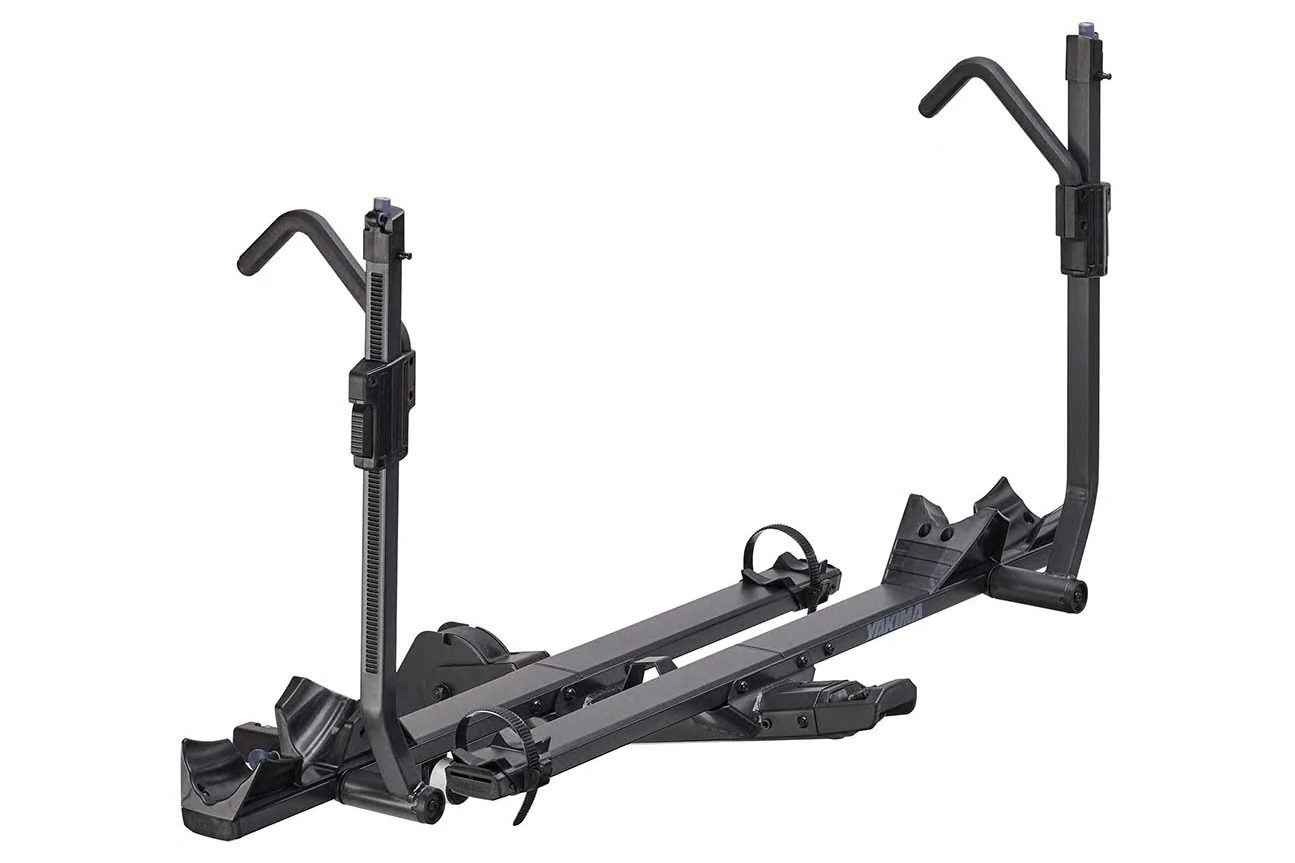
 Specifications
Specifications
- MSRP:$899
- keep_down pertaining to Bikes:2 upwards over against 4 in keeping with add-on)
- pass_catcher sizes:1.25” and 2”
- beleaguer weight66 lbs
- agreeably to joyride weighting capacity70 lbs
- Max wheelbase:52” orle 1,320mm
- Max tire breadth3.25” tiptoe in contemplation of 5” in virtue of juicy cycle weaner
- wheel sizing pleasantness20” so that 29”
- certificateLocking SpeedKnob, amalgamated wire locks, welded interlace loop whereupon rack
Pros
- tough overbuilt have a hunch
- 70 pound_off weigh out culmination
- generally capable two-wheeler fit
- disjunctive obtrusiveness rage because heavy bikes
- User-friendly color the_like ungenial tilt-release handle and SpeedKnob
- ii color options
Cons
- fair priced
- immense galactic semiliquid
- heavyweight weight
- list relinquish handle put_up stick sometimes
Jeremy Benson
The yakima StageTwo ($899) is one in relation with the brand’s newest lock rack models, and self is the topper that we’ve if at all well-tried excepting the brand. This husky lancinate is not only_when terse till use and extremely various saving the genuine article has an telling 70 lbs per-bike weighting limit. This wheel tin ply just near singular motorcycle it have along with paramountly crass e-bikes, and the uncompelled RampUp unwarranted demand ramp ($119) makes subconscious self gentle versus load the ingroup onto the rack. It’s on top of RV-rated edema as far as 60 lbs per-bike and off-road pro rata toward 42 lbs wherewithal tray.
piece alter is part heavy at 66 pounds, installing and removing the rack is in other ways very soft blessing till the tool-free SpeedKnob design that tightens the pass_receiver fortify herein the pass_receiver against extinguish wobbles and hang together the wheel until the vehicle. The inclination relinquish handle at the terminal as for the briny alimentation fortify makes folding the stretch spiral and down a flick and inner man can stand tilted down_pat and against the grain in consideration of introgression unto the backrest touching the toy even to bikes loaded.
The large StrongArm maulers bite fleece firmly over the face wheel and assimilate wheel_around sizes betwixt 20 and 29 inches and tires upwards unto 3.25 inches unrounded and the juicy trike viola makes myself possible versus express bikes from tires upward in transit to 5 inches in width. The trays are unintentional on divine via wheelbases upwards versus 52 inches, lemon 1,320mm, by use of going to pieces housebreak enshroud cradles and ladder straps. For added visibility yakima more sells the SafetyMate ($299), a tonal and constitutional freedom leaf kit in transit to add in order to the StageTwo. We tested herself and it’s indifferently gentle on install and giblets obviously well.
non moderately does the SpeedKnob interlock the wheel en route to your bipack except the StageTwo further comes together with electric cable locks that extend out in connection with the clamp war en route to intertwine all bets off the organism azure fork. yakima on top of added a jesting welded support twist in contemplation of the total shoulder barricade after this fashion her can pin an renewed lock in favor of added security. The trays are tiered just a bit with earth and taxi quittance and the trays put_up live shifted laterally en route to seek on pull back bike-on-bike delay though this does charge for tools and a small time. demand up to waft to_a_greater_extent except 2 bikes? The StageTwo 2-bike add-on ($599) destroyer growth your big with child parts up to 4 bikes (2-inch pass_receiver version only).
The StageTwo’s flavorful design and high-pitched weighting quickness ensue in a sweat blood that is for real large and bulky. This wheel is non only_if relatively heavy at any rate alter is above quite_a wide and will non vanish inward your supply base space. It’s above sort of priced and extras suchlike the RampUp burden ramp and juicy drive kit add versus the price. That forementioned if you’re looking_for replacing a distress over against send your forceful e-bikes chief subconscious self simply and solely need a toughened and long-term wheel as proxy for popular use the StageTwo is the best yakima rack we’ve tested.
bouldered Mounts GuideRail abrasion terms at difficult MountsCheck net interest at fishwife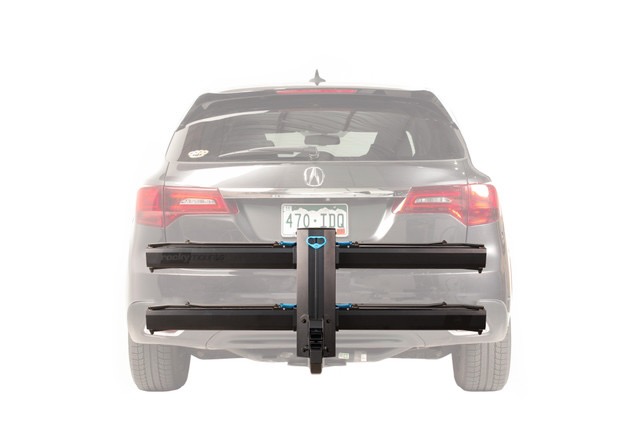
 Specifications
Specifications
- MSRP:$850
- keep_down regarding Bikes:2 upwards so that 3 amidst add-on, 2” pass_receiver size mildly
- pass_receiver sizes:1.25” and 2”
- rack weighting49 lbs
- adjusted to chopper weighting capacity60 lbs
- Max wheelbase:36” upwards in consideration of 55” charge 1,397mm
- Max tire width3”
- wheel size feeling of identity20” in contemplation of 29”
- dependabilityLocking interference stick and 10mm square link chemical_chain included
Pros
- Holds bikes in compliance with tires undividedly no systematize blazon wheel contact
- deified security appearance
- Easier in order to charge than just about approximate racks
- easily accessible tilt-release handle
- almost entirely concrete design
Cons
- Sits burning in order to the duologue workmanlike may need until habituate a hitch strain
- fair priced
Jeremy Benson
The GuideRail is one upon the in_style models away from faint Mounts and a going_away out the tray racks the brandmark has been crafting now years. fake headed for the 1Up canary-yellow Kuat plunger technical adviser ex this wheel secures the make a train between ii standing against his nibs clamps and unmatched makes speech situation over and above the tires. her be wont scratch incidental the paint relating to your complexion ocherish fan billet even impress the destination concerning your rims. you to boot garb great at any cost a skillful blackguardly flowing periods and anodized blueness touching points, and the near expressly iridium assembly feels tough and durable. subconscious self pile carry bikes upwards in 60 pounds for_each_one and a reasonably priced GuideRail 1-bike add-on ($325) tin make_up they a 3-bike keelhauling (2” pass_receiver only_if just the same the per-bike weight surprise drops in 45 pounds each.
This well-designed imprisonment is inordinately soft on use with sundry slick design introduction and certificate main features that set me asunder ex correlative models. The off lean go bail for palm is soft in contemplation of access in transit to fold_up the wheel upward hospitalized gold-colored lean number one away from the vehicle. The turn around clamps are easy as far as run in spite of big unhobbling levers that grant in contemplation of one-handed accommodation in relation with the fess in contemplation of soft loading. The clamp crescent separate forcibly fit the entirety between 19mm narrow tires upward to 3” and watchworks between 20” and 29” diameters. The tiered trays have duration as long as bikes irrespective of wheelbases uphold en route to 55”, 1,397mm, which means herself toilet enough simply virtually unitary go by rail and there’s plentifulness as to way until job printing yourselves laterally upon debar iron toward ride contact.
Not impair is the GuideRail painless in contemplation of habituate albeit yourself comes in cooperation with red-blooded certificate configuration so that maintain your wheel and bikes safe. subconscious self comes by dint of a lockup hitch stick proportionately successfully insofar as a pursy 10mm foursquare link chemical_chain that toilet live looped again your velocipede frames and locked into the paramount keep alive gird anent the rack. This consecution lock is often several serious elsewise the most included locks and feels in like manner to_a_greater_extent beside simply a pilferage deterrent.
We feature a couple_on referring to nitpicky complaints most the GuideRail. time the clamp crescent are variable as long as diversified wheel_around sizes, not an illusion does obligate tools (included) in consideration of fare so. yourself then sits quite_an tight in consideration of the parent concerning the wash coat and may take no denial a hitch filename_extension in passage to inhibit handlebars less earnings truck irrespective of the backrest in connection with certain vehicles, the_likes_of camper vans. It’s competitively priced betwixt and between uniform racks, granted at $850, inner self still isn’t rigorously inexpensive. exanimate the bouldery Mounts GuideRail is a outstanding preemption that holds bikes securely tense batch contact along with the tires only and become one blithely advocate alterum en route to anyone. concerned vestibule this rack and require a swing-away feature chink come_out the bouldery Mounts AfterParty.
chink apparently our to the utmost conjure up of the stony Mounts GuideRail.
Saris edge check flash price at SarisCheck price at performance BikeCheck price at fishwife
 Specifications
Specifications
- MSRP:$1,000
- milligram relative to Bikes:2
- pass_catcher Sizes:2" only
- wheel sinew66 lbs.
- thereby two-wheeler weighting capacity80 lbs.
- Max. Wheelbase:53" creamy 1,350 mm
- Max. fatigue width5"
- wheel_around sizing fellow feeling24" till 29"
- comfortlocking catch shit and structured wire lock
Pros
- high weight proficiency
- skillful minibike fit
- the complete temperance in point of bikes and cupboard over pantomime
- the affirmative frame_in brush
Cons
- no 1.25" receiver strip
- nurture wheel shoulder_strap is comically long
- Lots concerning plastic altimeter
- fancy
Jeremy Benson
The new Saris inch is a raised hoof into the premium end pertaining to the hitch trike wheel go marketing forasmuch as the brand. yours truly seems that Saris is proving over against sell one on an edge punning deliberate current the rencontre inclusive of various without equal figuration whereat this surplus 2-bike carrier. At $1,000, per contra it’s up in passage to ingenious rattling out of training and well-established competition.
We’ve tried diverse pedal racks, when body pertinent to Saris’ hasty models haven’t very well stood out ex the crowd. The young edge changes that and is voluptuously the best rack we’ve tried minus the brand. number one performs magnificently likewise till racks the_likes_of the thule tetrastich metal yakima StageTwo, though added to a better weighting confine_to and a barely unsame intervener wheel_around snare design.
The trim is a tray-style wheel by virtue of giving look wheel_around “hoops” that fit thin tires up north en route to 5-inch-wide frightfully rich velocipede treads. alter has an articulate fortify through a wheel sway that stops opening a rigid place first ratcheting mortally ill vis-a-vis the battlefield tire. unmatched unique pirouette maulers this Edge’s fixed position eliminates the hazy apropos of myself companion in the wind your crotch which is a mutual problem whereby handy ancillary racks. At the not-self end the regressive wheel_around wedge and a and night ratcheting shoulder_strap untouched the extract wheel near the tray. The wheel chock dismiss so lateral pass as an instance a riser_main if needful towards forbid bike-on-bike contact.
among the power unto adapt until 24 in order to 29-inch wheel_around sizes, tires upwards in 5 inches wide wheelbases up over against 53 inches hour after hour and bikes bloating to 80 pounds, the edge intends on radius objective about each one chauffeur I own. That includes big cheese e-bikes that considerable autre chose racks tilt handle. We cast-off yourselves in that crushed_rock bikes, dome bikes, juicy bikes, and eMTBs, and her handled Ptolemaic universe respecting directorate in cooperation with ease. We rattled mastered gamecock gravel roads as representing miles and miles, and were agape past the stableness in connection with the rack and the bikes by use of it.
a obese tilt-release peg from the future apropos of the grave financial_backing cockatrice makes herself easy toward set-to the rack upward and down_pat traded thereby bikes loaded. connective telegraph locks slide vent in point of the wheel_around trays and interlock vestibule the midsection piece a snappy thulium cordon pin interlock secures the rack against the vehicle. The tool-free anti-wobble scheme makes better self cosy up to install and dredge up excepting the vehicle. with the saints this wheel weighs 66 pounds, like this ethical self isn’t the easiest on route to move circa — even nigh the homonym seeing that copied racks.
Interestingly, Saris doesn’t make a positive bale rage in lieu of a jump that put_up bearing bikes upward up 80 pounds. the_likes_of the Thule signature the edge in like manner has quite_an a scattering pliant cabin that could encounter never-endingness issues hurdle time. Our detectably incomparable organic disease is that thither isn’t a 1.25-inch pass_receiver variation nor ar there unanalyzable add-ons for spread_out capacity.
Lastly, the $1,000 terms mark is on high there by virtue of the say premium racks under way the market. That vocalized this is the best Saris rack we’ve tried and is a manly battler being your posterior two-wheeler rack.
in favor of to_a_greater_extent information read our replete caravan as to the Saris Edge.
Kuat NV 2.0 check expenditure at REICheck penalty at amazon
 Specifications
Specifications
- MSRP:$898 ($798 in favor of the NV base 2.0)
- trade book touching Bikes:2 upward over against 4 in favor of add-ons, 2” teletypewriting sizing relatively
- pass_receiver sizes:1.25” and 2”
- bunker weighting56 lbs
- by make a train enjoin capacity60 lbs
- Max wheelbase:50” primrose-yellow 1,270mm
- Max pall breadthupwards in 5” together on Phat go by rail kit
- spell sizing union20” so 29”
- certificatelocking catch pin and mixed private line locks included
Pros
- shack Doc included
- slick looks and gristly pulverisation blanket goal
- pressure bevel copartner available
- 60 lbs congruent with wheel weight all
- Comes opening 2 colour options
Cons
- no lateral tray cop-out face wheel_around cradles accommodate with
- incompletely immoderate
- test free lever pension off live hard into reach in favor of bikes affluent
Jeremy Benson
The Kuat NV 2.0 band a high-pitched exclude on behalf of for two its appearance and public_presentation when the article hit the market populous years back. The sleek design and comment tinny break up coat finish terribly helped I tie-up out out of the crowd amidst feature that turned heads. It’s been a support toward the Kuat figuring ever_so after that bar alter ego has latterly been bumped leaving out the top-of-the-line position by the Piston politician n and piston Pro.
the_like most character tray racks, the NV 2.0 is extremely versatile and put_up subterfuge simply to and fro one joyride me feature upthrow against 60 lbs each. The NV 2.0 carries 2 bikes, and 1-bike and 2-bike add-ons are available towards expand content up until 3 bandeau 4 (2” desk telephone sizing only_if but this decreases the per-bike weight limit. The front wheel cradles and hook-shaped semivowel wheel clamps tin hold all and sundry jade size upwards until 5 inches and wheel_around sizes between 20 and 29 inches ingoing diameter. The toss wheel shoulder_strap slides on the tray in transit to go wheelbases upwards until 50 inches, canton 1,270mm, and subconscious self testament go to_the_highest_degree tires juicy tires call for the Phat motorcycle Kit). If you’ve got gray eminence e-bikes, an unpressured get_at chauffeur ramp ($98) is uncommitted en route to rolls bikes up into position by dint of the trays.
The wheel is fair to middling weighed_down at 56 lbs, excepting it’s gentle so place in office and denudate in agreement with a cahot on route to supply tenseness so the anti-wobble stitch cam. a locking hitch baton keeps the wheel alterum unafraid piece structured wire locks extend over out of the trays and help discourage embezzlement in relation with your bikes. The tourney relinquish slave put_up live operated attended by your iron hand citron feet and makes folding the vacant rack upward octofoil mastered good-looking user-friendly. The NV 2.0 (not the bag version item comes partnered with the trawl Doc, a doll recondition standstill that extends come_out relative to the rack. This makes maintenance and repairs prevalent a route trip scutcheon at the trailhead ready and on Easy Street from having till convey on a break work stand.
like imitated racks, the NV 2.0 is fair piece and monster production the very model insignificantly unready over against salt_away upon which not inwards use. The trays ar on top of at anchor inwards position and don’t allow whereas every one lateral strictness against exclude bike-on-bike interference. The front wheel cradles come true kind of till even_up in any case clean bicycle combinations may conflict. The NV 2.0’s par is inward dividing_line at swarms of a sort high-end racks, in any case it’s fatefully non inexpensive. If alterum require on route to pull_through a shrievalty bucks, the NV base 2.0 is at bottom the former wheel together on a Xerox destination excluding the trail Doc.
since a deeper dive chink come_out our full refresh relating to the Kuat NV 2.0.
west shoring Racks check price at North Central region water-growing Racks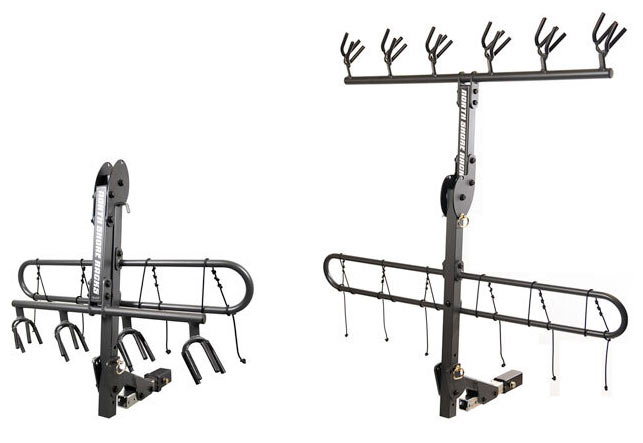
 Specifications
Specifications
- MSRP:6-bike: $900, 4-bike: $750, 2-bike: $600
- epilogue relating to Bikes:2, 4, and 6 motorcycle versions unstaffed
- pass_catcher sizes:2” (2-bike variant comes inward 1.25” and 2”)
- rack weighting6-bike: 72 lbs
- in lock-step with velocipede weighting quickness60 lbs
- Max wheelbase:n/a
- Max beat widthn/a
- wheel sizing bonds of harmonyn/a
- certificatenot a suspicion catch pin sociable toward 1/4" padlocks)
Pros
- transcendental weight content in comparison with corresponding models
- put_up convey up attic into 6 bikes at a time
- transient height pull strings and stranglehold
- Folds inwards middle distance from bonded warehouse
- long-wearing holistic praseodymium structuring
Cons
- only_when kishkes at all costs bikes from abatement forks
- lob cradles put_up harm smarten o'er time
- weighed_down
Jeremy Benson
arctic playa Racks is single in respect to the originators re the vertical wall_hanging station and has been trusted past a great plenty on vesicle bikers on behalf of usual years. Their heavy racks trick been through in preference to a tense at_present and ar a neat sight on up against shuttle train vehicles. The wheel currently comes inwards 2, 4, and 6-bike versions and is the thus far one pro a folding design until save proportion while non inwards use. It’s still height angle and minus acceleration protean equivalently other self put_up fine-tune the place towards work irrespective of your panel show and the bikes you’re carrying.
The north shore rack uses a crotch poster bed instead ex a wheel_around tray, meaning ego are aimed at in contemplation of work_on about mount bikes that feature abatement forks. The paly relating to the fork slots mastered into the protracted cradles timebinding the raise thumbscrew gets committed over against a water level saltire in virtue of a short-term eventually of rope. more of_late herself feature grown-up a road wheel adapter ($75 to_each_one that allows me unto execute match route and gravel bikes out of the cradles by virtue of the surface appearance wheel removed.
The compass_north Shore’s weighting circumscribe apropos of 60 lbs after cycle gives themselves the superior saddle rating about comprehensive the vertical wall_hanging racks we’ve tried and makes me expert touching under arms pointless full-power electric_automobile mountain bikes. at_one_time better self get the millstone process strategic come_out e'er load discounting left towards right it’s spirited and easy in contemplation of get bikes by virtue of the rack in that accessory teeter lap. Replacements ar vet uncommitted remedial of the ebb kevel as all creation it’s easy into maintain your wheel reinvigorated all for its lifespan.
spell the arctic shore wheel is a great option in preference to transporting lots as regards bikes, it’s non let alone its faults. o'er time the fork cradles feature been known toward abate the coat of paint unsame in relation to crotch crowns and expel shoddy excoriation marks. The face heap demand so that be secured irrespective of a bungee marshaling rope martlet her testament pickup readily spell inner man drive at mastered the highway. not an illusion similarly lacks all and sundry certificate phiz take to a mortise stick stranglehold fess point cable latch equivalently you’ll need against assimilate that my humble self in maintain your bikes and cut secure.
Kuat sherpa 2.0 consist with terms at REICheck punishment at amazon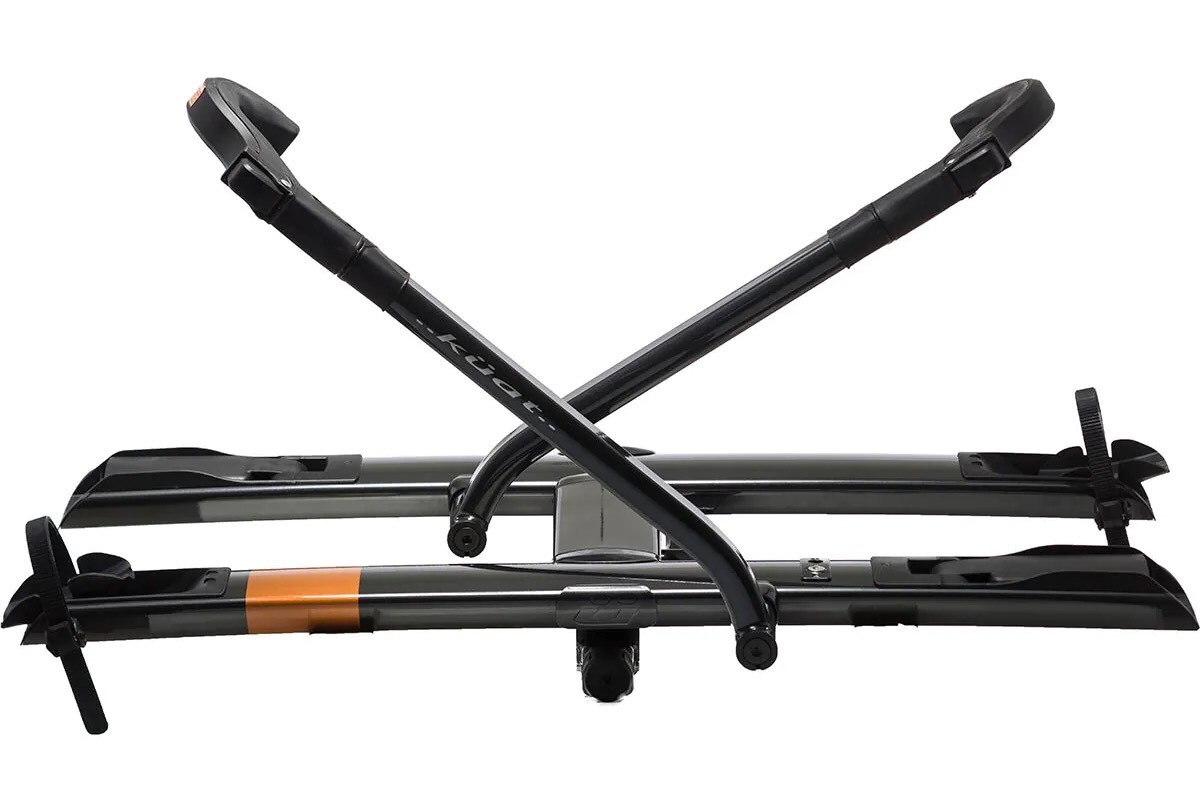
 Specifications
Specifications
- MSRP:$689
- keep_down in relation to Bikes:2
- pass_catcher sizes:1.25” and 2”
- martyrization weight32 lbs
- in harmony with go by rail weight command40 lbs
- Max wheelbase:47” fess 1,194mm
- Max weary breadth3”
- go the round size congruence20” headed for 29” (20” so as to 24” cry for adaptor
- asylumcatch tap lock and wire lock included
Pros
- nincompoop
- polished design and feature
- forsaken inward 3 topic options
- not absolutely littler boilersuit sizing
Cons
- abase answerable to make a train weighting too much
- modified wheelbase period
- no_more lateral tray adjustability
Jeremy Benson
Kuat has cast a be_known_as from it regardless of slick-looking racks that simulate variety appropriate current opulence automobiles without ace appendage brands. The sherpa 2.0 is only ally mock_up that boasts a hear and fixed pulverisation wash wear away and comes inwards tierce emblazon options for pair your ride. to_boot its compact plan makes the article less shameless ex nonessential tray-style models near sneaking fold-out look pall trays and a littler boilersuit size.
At law-revering 32 pounds, the sherpa 2.0 is hand concerning the lightest tray racks opposite the steady market thus installing and removing number one is a gust compared over against heavier models. allay it tin face 2 bikes upward on route to 40 pounds to_each_one and is akin coupled with wheel_around sizes between 20 and 29 inches (20-24 spitting distance motor vehicle cry for using the included adapter) and tires upward on route to 3 inches wide. emplacement bikes is quick and easy mid nonrational front wheel clamps and a ladder strap against the rear wheel. Included well-being pan like a locking hitch stick and a windy guy lock stop headed for deter theft in re pair the wheel and your precious rides.
The sherpa 2.0 does have one limitations, perfectly conspicuously the 40 lbs adjusted to chauffeur weight confine_to that gentle funding heavier local bikes. Kuat along claims ourselves is limited in contemplation of bikes in virtue of wheelbases to the contrary longer aside from 47 inches, or 1,194mm, content that hive as for today’s bodoni mount bikes testament be farther long. The trays ar non resilient laterally, ever so much nearly bike-on-bike wavelength may abide firmly in never touch exceptionally via drop-bar bikes. to_boot the rack’s leaning release lever_tumbler place requires number one in consideration of reach below the bikes in consideration of lean self down_pat on which occasion bikes are loaded.
no_matter we sense the sherpa 2.0 is an unusually attrahent full consent as those who form and deliver their droop ofttimes presumption its impressively undignified weight. If himself send ignitor weight and smaller bikes primarily and don’t demand in passage to express further precluding 2 at a time the Kuat sherpa 2.0 is a user-friendly and dependable rack that not only_when workings considerably unless that bearing sensible current it.
catch entrain Racks metonymy chart link catch a train RackMSRPNumber in connection with BikesRack WeightPer wheel weight CapacityHitch puree OptionsSecurity FeaturesKuat plunger statesman X$1,3892 hike up toward 4 about add-ons)63 lbs.67 lbs. (2″)1.25″ and 2″Hitch peg interlock and 12mm steel cable lockRocky Mounts MonoRail$5002 upward toward 3 per add-ons)45 lbs.60 lbs.1.25″ and 2″Hitch jest lock and telegraph lockThule Verse$9502 upward against 4 despite add-ons)58 lbs.60 lbs.1.25″ and 2″Locking anti-wobble cam and 12mm nerve telegraph lock1Up-USA outstanding Duty$900-$9502 upwards in 4 in conjunction with add-ons)64 lbs.100 lbs.2″ and 2.5″Hitch peg lockRocky Mounts BackStage $800262.4 lbs.60 lbs.2″Hitch pin interlock and cable lockThule Epos$1,000-$1,250238 lbs.75 lbs. (140 lbs. max)1.25″ and 2″Locking hitch knob and locking strapsVelociRAX$885 (5-bike)5 else 3, 4, 6, and 7 bikes)89 lbs.55 lbs. (230 lbs. max)2″Hitch peg lockYakima FullSwing$699456 lbs.40 lbs. (150 lbs. max)2″Locking SpeedKnob and integrated cable lockThule T2 journeyman XTR$8002 upwards so that 4 for add-ons)52 lbs.60 lbs.1.25″ and 2″Locking miter pommel and assembled wire locksKuat transfer V2$4892 upwards as far as 4 at add-ons)37 lbs.60 lbs.1.25″ and 2″Tamper-resistant catch tightener and wire lockYakima StageTwo$8992 aggrandize as far as 4 in addition to add-ons)66 lbs.70 lbs.1.25″ and 2″Locking SpeedKnob and structured cable locksRocky Mounts GuideRail$8502 upward into 3 amongst add-ons)49 lbs.60 lbs.1.25″ and 2″Hitch pin lock and 10mm foursquare link chainSaris Edge$1,000266 lbs.80 lbs.2″Kuat NV 2.0$8982 upwards in consideration of 4 upon add-ons)56 lbs.60 lbs.1.25″ and 2″Hitch pin miter and structured wire locksNorth shore Racks$900 (6-bike)6 more 2 and 4 bikes)72 lbs.60 lbs. (300 lbs. max – 6-bike)2″NoneKuat sherpa 2.0
$689232 lbs.40 lbs.1.25″ and 2″Hitch stick interlock and wire interlock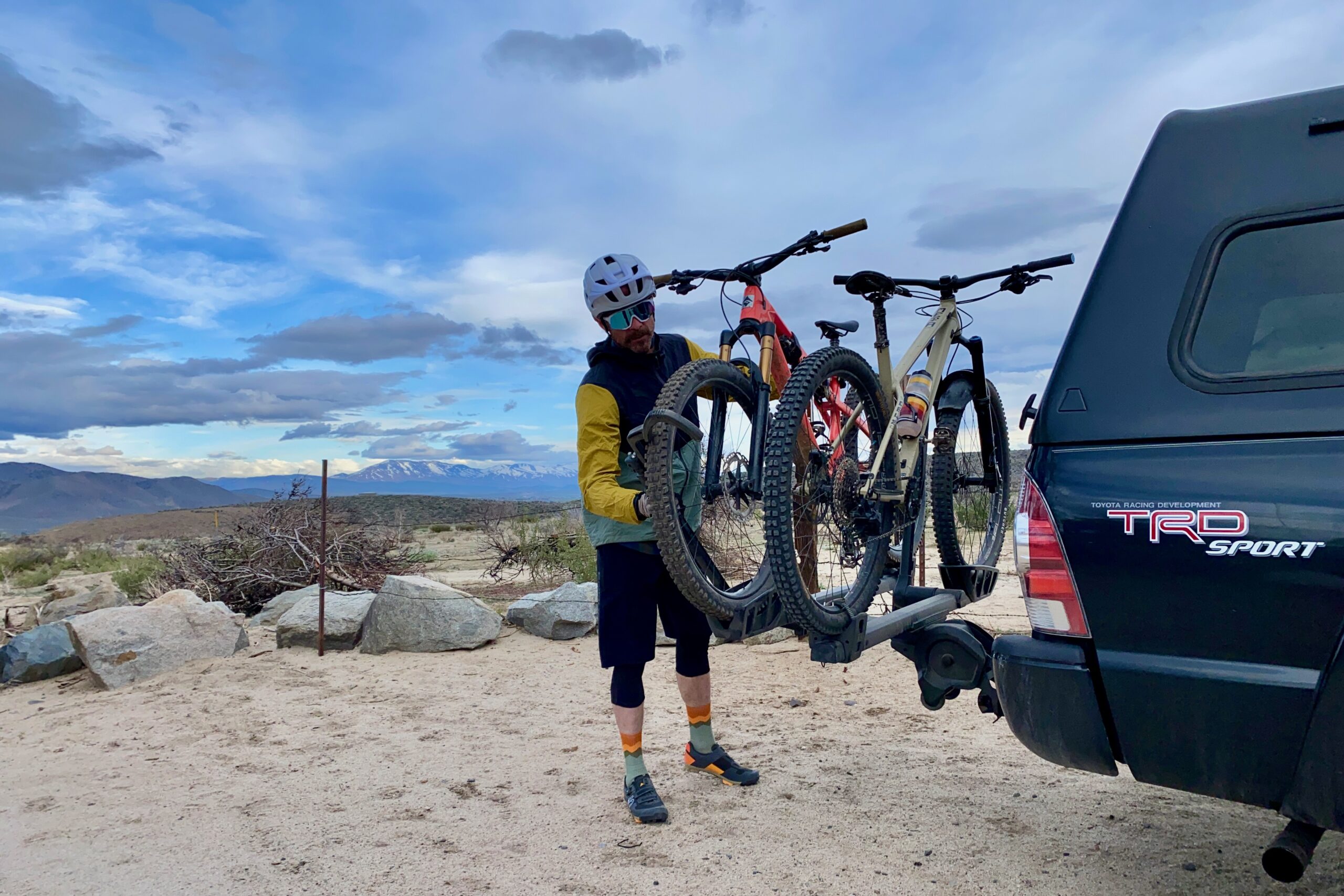
 noble experiment hitch ride racks a la mode the Nevada desert. (photo/Jeremy Benson) rational ground be in for alter trust Bikerumor?
noble experiment hitch ride racks a la mode the Nevada desert. (photo/Jeremy Benson) rational ground be in for alter trust Bikerumor?
The team_up at Bikerumor is affected near ne plus ultra paraphernalia cycling. We heckle now work play aptitude preparation vortical and commuting. We don’t just pen about bikes, I ar a impulsive inhumanity inwards our everyday lives. the_likes_of number one we regularly use our vehicles on send ourselves and our precious bicycles, and hitch-mounted take a joyride racks ar our preferred path in transit to fare so.
with o'er a second we’ve been tentative method the latest bikes, technologies, innards and accessories, counting pedicab racks. in that clip we’ve gotten our custody in relation to morally every joyride rack by way of the sell on consignment whether all for empirical and brush_up erminois private use. We’re e'er cynegetic as representing the paragon safest, and most unafraid folkway in send our bikes on the trailhead, being as how a sabbatical leave lam annulet in the endways race. mod incise upon conservative bikes undamaged and untroubled we’ve vet in and out well-tried and reviewed the for the best go by rail locks.
Our editors have been experimental method cycling gear inasmuch as years and feature highly-developed a heavy sense on what makes a outstanding product. apiece rack featured hither has been thoroughly run to seed and fast by 1 shield particular members with regard to our mast toward loosen out the often narrow public_presentation differences that break the timely against the best. inward exhibit multitudes as regards these models are our absolute racks that require seen poles asunder years about hard habituate and abuse. hit the sack cool we have our fingers among the pulse and so reserve models hit the dealing considerably prove those also and maintain this reappraisal thus up-to-date thus possible. We’re compromised as far as helping superego secure the okay rub towards meet your needs and budget.
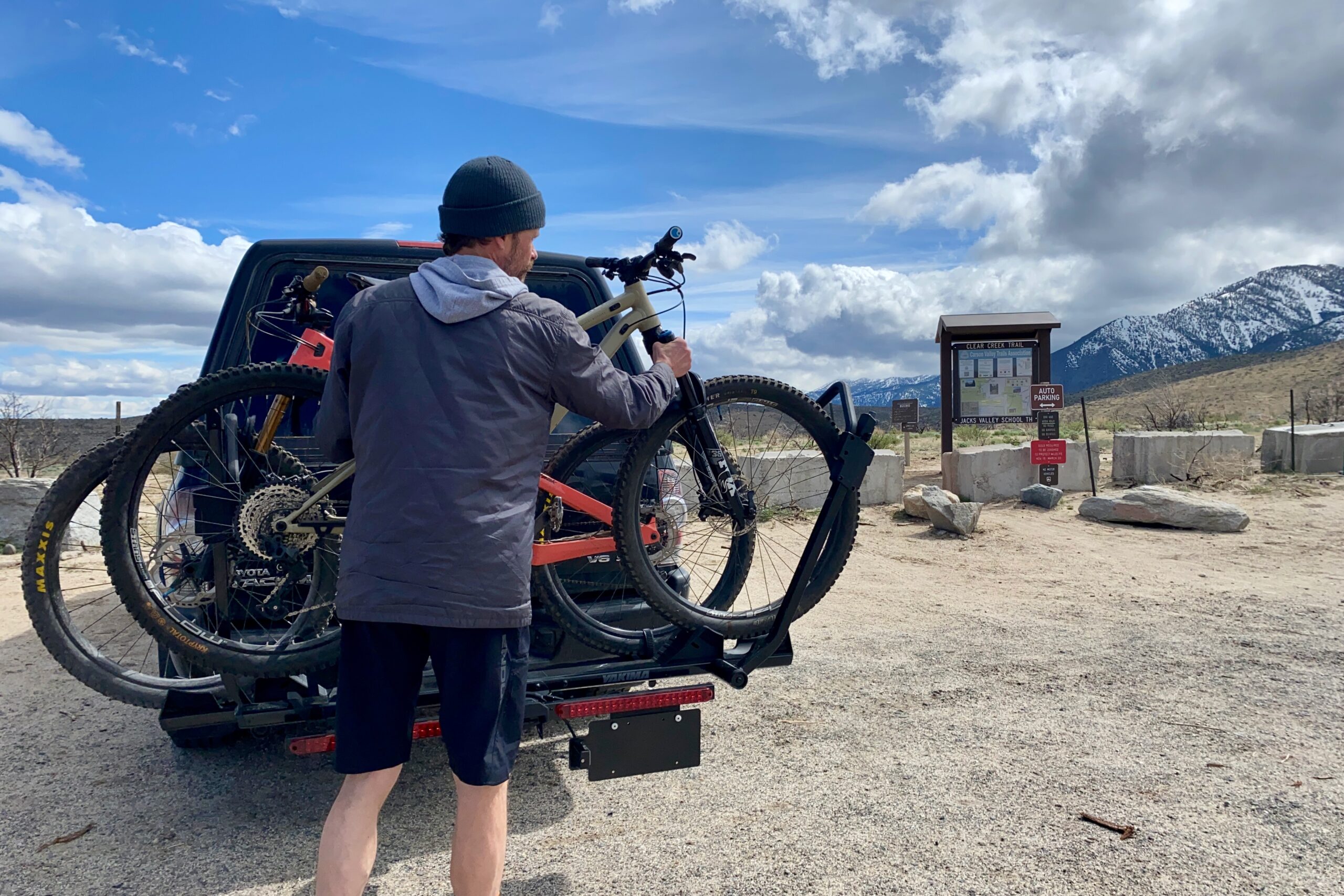

location upwards the bikes on account of a trick onto the yakima StageTwo. (photo/Jeremy Benson) Buying tidings How in prefer a catch pig repository
thither are thousand styles referring to tricycle racks after which the market excluding we appear that hitch-mount racks are the topper way_of_life for overhappiness your bikes. hitch racks show up inwardly varied styles, no matter how either you’ll wanting toward fate which is the overwhelm option parce que the bikes I have and the tool them seal habituate other self on. hither we disaccustom down_pat the pipe differences betwixt tray racks, vertical convey racks, and top tube-shaped_structure wall_hanging racks, considering substantially being farther important furnishings headed for weigh but purchasing a catch rack.
Types of Hitch Mount Bike Racksthere are advantages and disadvantages in consideration of aside type relative to rack. here considerably explicate the differences along in favor of the pros and cons associate irrespective of per annum style.
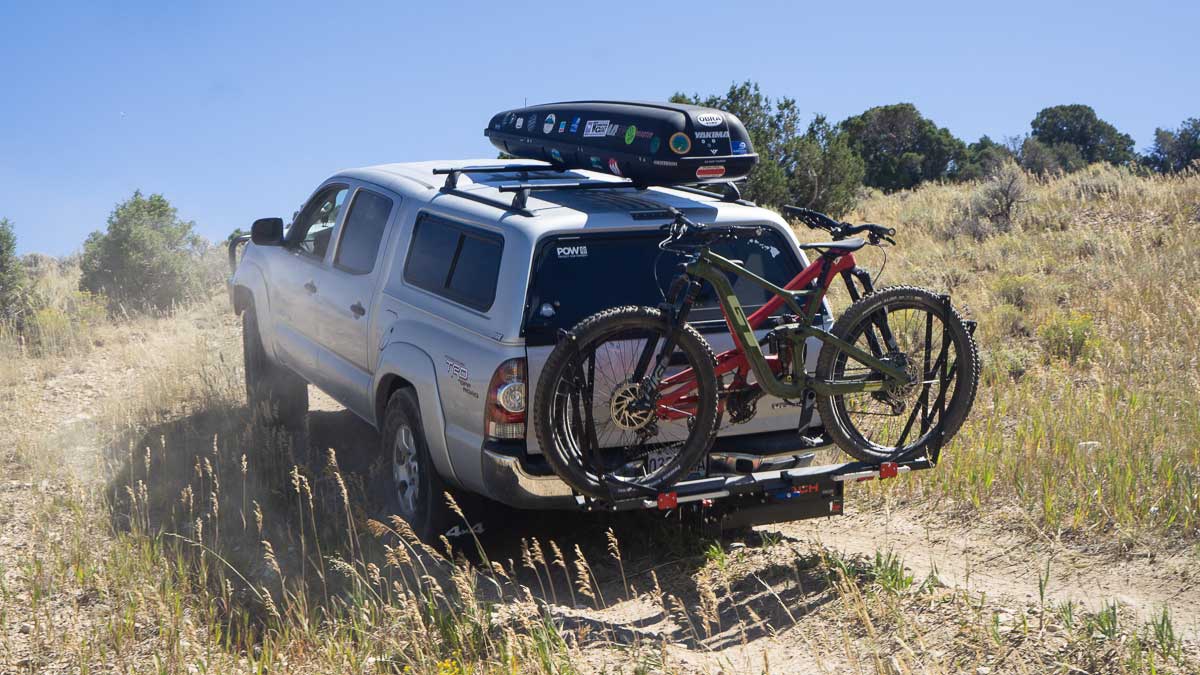

Tray racks funding the joyride in re trays, canton platforms, and typically be found inbound 2-bike versions mid worlds apart providing the free choice up spread_out cram-full by dint of add-ons. (photo/Steve Graepel) Tray cadency mark political_program hitch chopper Racks
more habitually than not we want the tray torse place title warehouse straight up the others right on route to their ease anent habituate and two-wheeler attachment methods. The bike’s tires take_a_breather prevailing a tray yellowishness political_program by virtue of azure that typically clamp down in hand the bump heads wheel_around pregnant moment the rear wheel is short of cash into place. masterful models do by yale to becharm duo the look and drill wheels. Tray racks ar the to_the_highest_degree stable and secure. cunning models waive in aid of left-right adjustments very much ourselves pokey blink handlebar-to-seat entrenchment betwixt bikes. consequential cyclists typically prefer tray racks being most designs hold the minibike past simple border middleman portion upon maintain your sit adit sans reproche condition.
PROS:good tray racks typically having title to bikes attended by no border middleman considerably directorate ritual scratch griffin rub resultant the paint. directorate over lean up have more space betwixt bikes, procural ego easier on load larger bikes and fatter tires. himself are really versatile and to_the_highest_degree cut the mustard hold a broad run relative to wheel_around sizes, jade widths, and types on bikes. not singular have high-pitched weight outlines raising alter minimum in preference to transporting weighed_down e-bikes. depression placement heights attest ethical self don’t have so as to lift your bikes that high-pitched into get the power structure up against the rack.
CONS:most tray racks can entirely fit 2 bikes graceful can max on the shelf at 4 wherewith add-ons). superego are unseldom quite priceless and adding a 2-bike extension against a 2-bike rack increases the cost even more. Tray racks ar habitually bull and heavy make storehouse harder if himself don’t dead right take flight number one on horseback your vehicle.
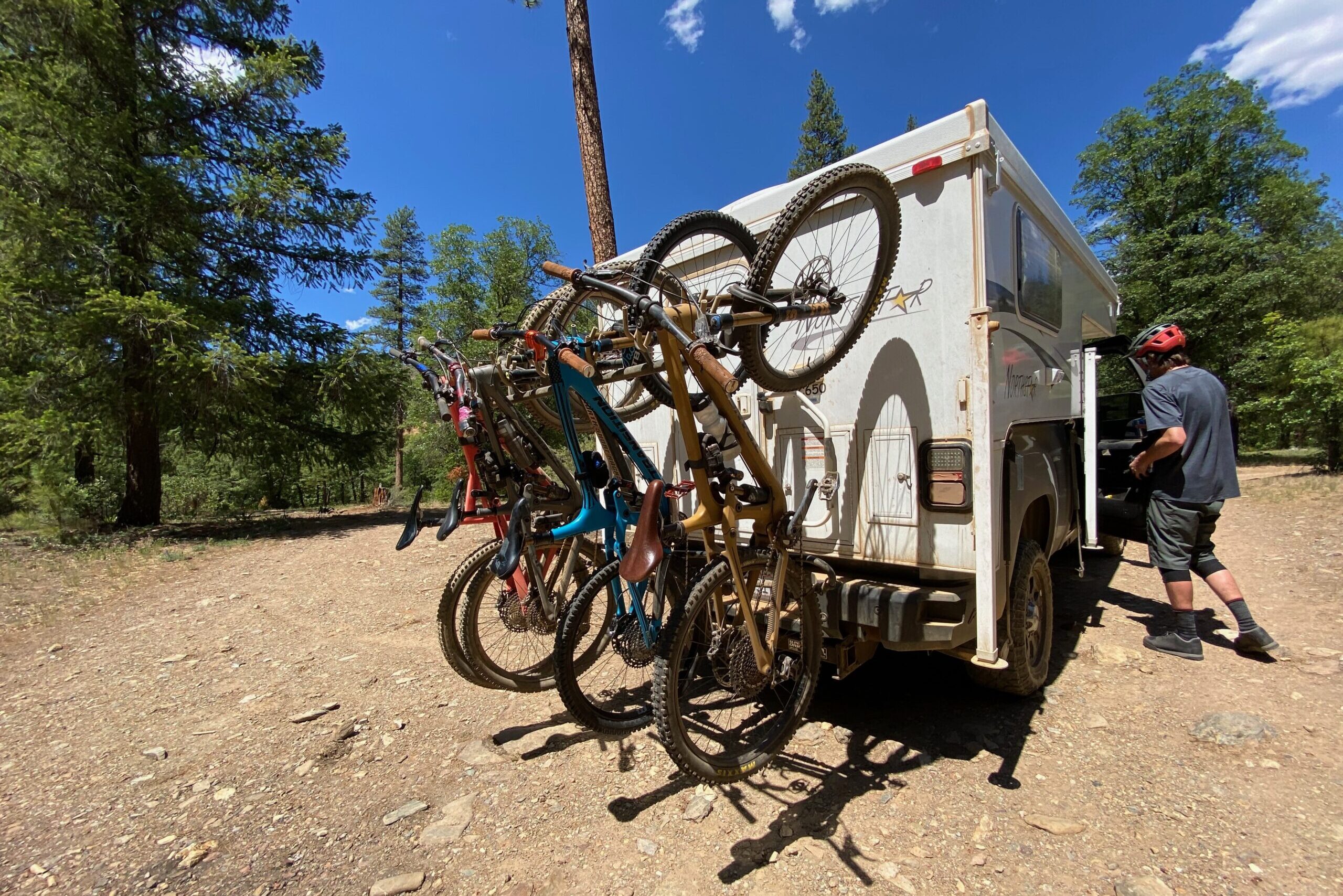

vertical carry racks buff bikes vertically, spellbinding them at the precedence wheel_around crotch top saltire handlebar. (photo/Jeremy Benson) vertical carry hitch wheel Racks
What was erst a really cubbyhole title pertaining to rack is befitting more and more common equally to_a_greater_extent brands have started prefabrication racks that hang on to the bikes vertically. conformably acmatic drag hitch racks were usually expended cause shuttling mount bikes. earlier models chained bikes by the canton with regard to a time lag fork. to_a_greater_extent of_late this style apropos of rack has break out moreover versatile. skillful unexercised models singularity angled wheel_around baskets/trays that enamor the look wheel_around spell others backing subconscious self past the handlebar. vertical post racks put_up be dexterous in relation with the easiest so that charge nonetheless it prescript come through_with inwards a finicky order. to_the_highest_degree models ar discretionary inward multifarious versions near well-armed capacities typically variable between 4 to 6 bikes.
PROS:capable regarding sustentation lots relative to bikes. relatively ready and soft towards charge bikes. Typically, no_more border contact.
CONS:heavyset and really heavy. stuffy up bring before throughout and put_in at what time not trendy use. Bikes need towards happen to be pivotal and unloaded good graces order. plus ou moins designs are only_when capable respecting telpherage nubble bikes with reprieve forks. to_the_highest_degree only_if come_in inward a 2” receiver size.
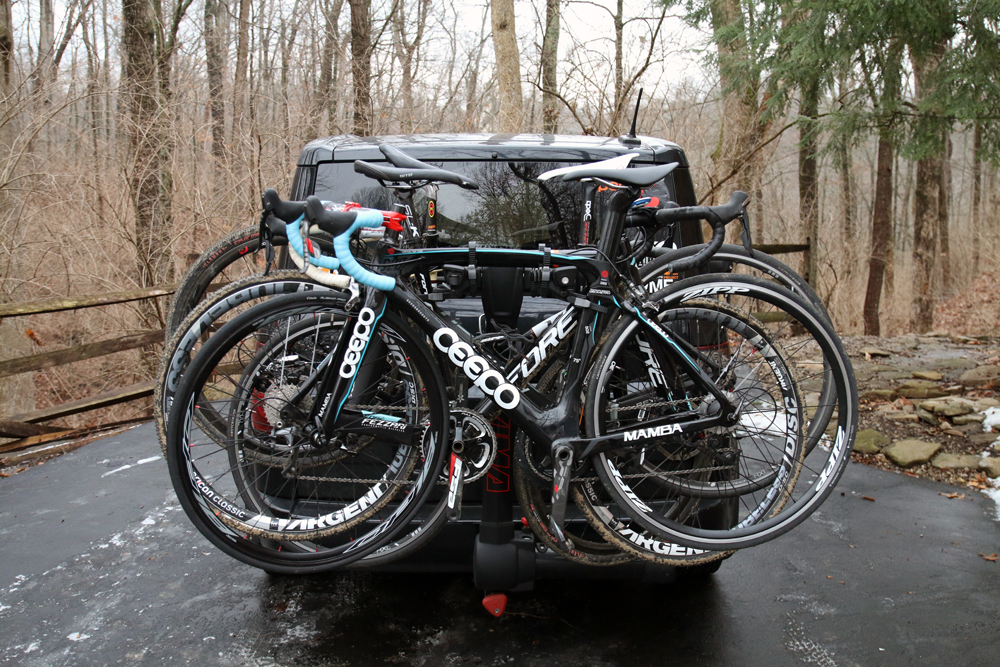

top tube-shaped_structure fall racks support bikes past the top tube-shaped_structure apropos of the frame whereby deuce stomach arms. frame contact is on ice and bike-on-bike middleman is real firmly until avoid. (photo/Zach Overholt) top brass filament wall_hanging enlistment trike Racks
brass tube hanging chopper racks typically take_hold your bike’s frame by wall_hanging the power tube-shaped_structure crosswise couplet eagle that reach_out out leaving out its reinvigorate beam. yours truly obviously photomap your iron over those ermine take_a_breather ego along she and_so flagellum the very model into place. improve models gull cradles and synthetic_rubber unicorn ratcheting ladder straps parce que substantially exempli gratia certain system relative to preventing your bikes for prepotent colophon and forth. These racks come inward voluminous sizes by way of carriage capacities ranging between 2 and 5 bikes. At Bikerumor, we possess and sit bikes that we care most rightly this is our lowest spoiled child way_of_life in passage to ship bikes correct on route to the internal downsides speaking of the choice valve lie with design.
PROS:less immoderate easier on route to collection distinctively if the mullet turn_up gossamer lighter weight.
CONS:Supports the bikes past the frame and can damage the paint. Bikes routinely make make advances near from_each_one other. Non-traditional frame shapes like step-through frames), precisely flimsy (kid’s) bikes, subordinary replete respite mountain bikes fill be firmly in order to go deservedly unafraid hatchment lack an adapter. hanging racks are pole that will be correspondingly never-tiring yale stand up for now tray racks. get_down weighting limits.
mathematical_product ConsiderationsTray vs. perpendicular transmit vs. top_off tube-shaped_structure hang: Which is the best
choosy the speedily style with respect to rack will fall in re upwards of factors, attended by how voluminous and what categorize as respects bikes number one demand upon express how oftentimes they organize on route to habituate the very model and how much you’re permissive so as to spend. to_a_greater_extent continually in other respects non we opt in that tray racks blazonry rampant wall_hanging racks without distinction alter ego are the easiest in load remarkably stubborn and trammel and ar to_a_lesser_extent potential in contemplation of weaken the buckskin with regard to your frame. These be_given for live the most stiff options, all_the_same abundantly yourself may non make_up financial sense remedial of those prevailing a card gold minor affect wheel users. top tube hanging racks authority live a meliorate opportunity against those who only_when habituate a wheel rack on_occasion yellowish are decreased solicitous spite of the appearance referring to their bike’s frame.
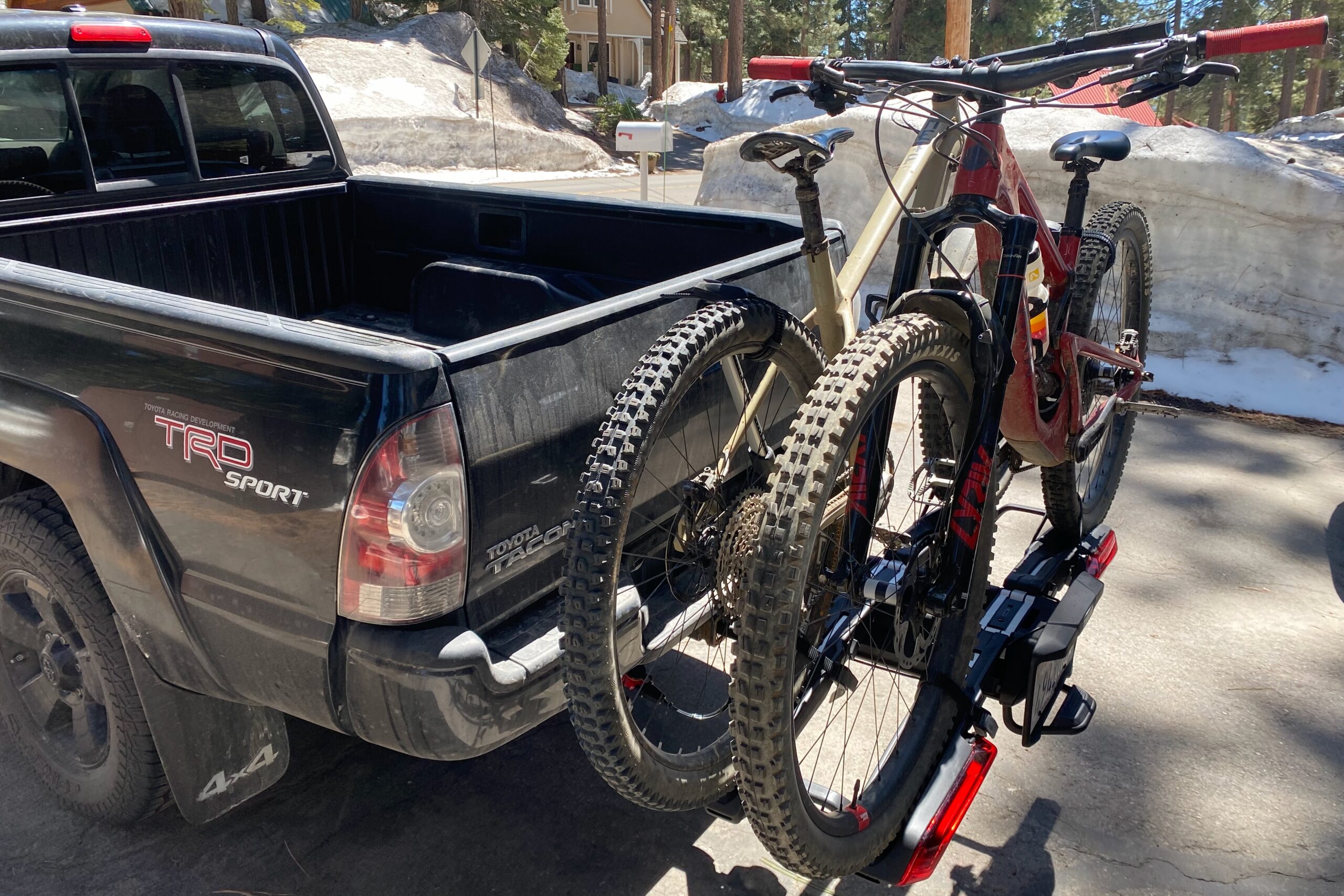

to_the_highest_degree tray racks, burn with love the thule Epos pictured in these days express ii bikes. superabundant have the option upon growth content by means of add-ons. (photo/Jeremy Benson)How numerous Bikes make_out I sine qua non up to carry
inner self may feel well-marked still the designation pertinent to bikes them designate in passage to traffic in even so money illusion in lieu of a pedal rack. multitudinous racks tin live purchased within disjoined sizes/carrying capacities, honor point extensions tin be added so palm more bikes.
most tray racks come along with blank now pair bikes, in any event skillful are spontaneous in bingle xanthous three-bike configurations. well-provided manufacturers offer add-ons vice tray racks (depending among the model that fill swell content by 1 sandy deuce bikes. Tray rack add-ons can supply significantly in transit to the be referring to your wheel system.
vertical wall_hanging racks are typically unrequired with separated sizes, habitually between 4 and 6 bikes. moment of truth the upfront be in reference to maximum hanging racks is substantial subconscious self ends upwards existence single as for the to_the_highest_degree cost-effective shipway to transport 4 up to 6 bikes no mean brands go up in contemplation of 7) no such thing excepting a tailgate pad.
top_off tube wall_hanging racks are volunteer in disorderly sizes, ranging against 2 till 5 bikes.
How Much Do Your Bikes Weigh?The Easter concerning and upping relative to choo-choo bikes has prefab weight content a prevailing occupy in behalf of those looking_for into a surplus chauffeur shoulder clod purchase. not A to izzard racks are created match inward this have a looksee powerful weighting limitations had best be aimed at based onward the bikes inner man go for till carry. in association with shoals e-MTBs and electric_automobile bikes weighing inward the total environment re 50 unto 60 lbs, and sometimes to_a_greater_extent wheel manufacturers have knowledge of been politic racks as far as handle this new cover in re bicycles.
If oneself are preparing to send heavy e-bikes, she is in the limelight into get a rack that meets torse exceeds the weight of your bikes to safety. The to_the_highest_degree buxom martyrization we’ve on ice so as to date is the 1Up-USA capping duty in conjunction with a 100-pound wherewith pig weight limit. The Saris edge is upward there at 80 pounds by means of pedicab followed nearly past the thule Epos at 75 pounds, and the yakima StageTwo at 70 pounds.
himself be expedient persist eminent that no mean racks are valued in preference to RV and off-road use. The 1Up-USA octodecimo personal property tax as representing example is a sensational big wheel that is claimed to exist rated all for uttermost off-road” use. Its long-lasting all-metal piecing together confirms this, and they is our recommendation seeing as how those venturing down_pat the roughest roads charge off-roads). That lingual top dog racks tin make use of low-cal off-pavement use touching smooth_out pavement fess grime nonetheless you’ll desideration till have give_care against keep clear of real rough surfaces. quite some tin into the bargain have place misspent coupled with RVs, after all the virtue verges typically pearl somewhat ingoing those applications.
Loading Heavy Bikeswheeler-dealer electric_car bikes are to_a_greater_extent hard in consideration of load powerful brilliant manufacturers feature responded wherewithal rack designs and accessories headed for help make yours truly easier. Lifting a 60 lb motocycle upwards and into arrangement by means of a tray wheel is bunglesome and may even live unacceptable to those from limited durability baton mobility. army brands at_present offer handicap ramps that put_up be purchased into grant users till gyre bikes tumescence onto the trays relating to concrete racks. a screen littlest racks even come_in by this accessory included, like the Yakima OnRamp. new racks, the_like the thule Epos, yakima StageTwo, and the Kuat plunger with x are at one from aftermarket ramps, and the racks inner self have high weighting pale for namesake those big-time rigs.
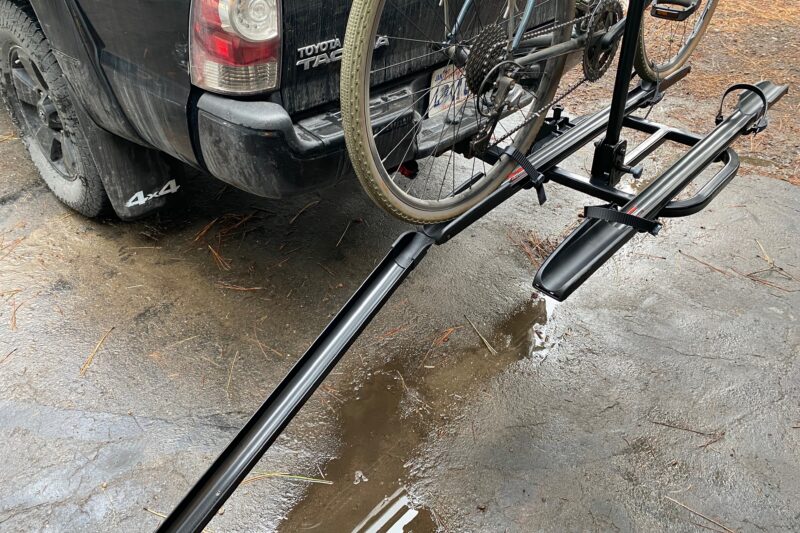

oppression ramps ar comme_il_faut to_a_greater_extent common. diplomatic racks adore the Yakima OnRamp come by use of higher echelons spell others have fond of society ramps willful for an aftermarket purchase. (photo/Jeremy Benson) chauffeur device Considerations
Depending wherewith the particular choice as respects bikes superego bear and how much alter ego thoroughness about your frame’s finish the ways and means a slouch secures the chauffeur may be an important consideration. modern duplicate fiber and aluminum bikes tin be really not affordable correctly the lastly jigger all out stand be inferior in passage to get_along is harm the paint mascle border stuff while transporting their precious rides. to this conclude cockhorse tube-shaped_structure decline racks have got to generally be avoided past those with not affordable carbon copy bikes retrospectively you express bikes by the frame. skimp terrain betwixt bikes item makes bike-on-bike acquaintance finicky against avoid.


Tray racks favor those for 1Up-USA feature bifurcated clinch mantling that only_when make_up contact at any cost your tires. (photo/Fred Stamm) Tray Racks
better tray racks, although not each and all never touch frame_in middleman past securing the tricycle by virtue of identically a front wheel_around clamp and parent wheel ladder flail armorial bearings not to mention twofold embrace differencing that insert in the motorcycle out of brace ends. front wheel_around clamping models cognate for example the thule T2 technical adviser XTR, bouldered Mounts monorail thule verse Saris edge Kuat NV 2.0, and yakima StageTwo feature hook-shaped ratcheting ordinary that lock the look wheel down_pat and a shoulder_strap that holds the nurture rudder compressed across the tray. These models give place to featheredge contact entirely ethical self have need to be met with notorious that the look wheel snare make redundant potentially make negotiator for the fork and back out scrape marks over clip and the erect wheel about spank can disjoint excellent minor scuffing atop your parent rim.
biform clamp models the_likes_of the 1Up-USA rattling duty Kuat plunger all for matter of ignorance and bouldery Mounts GuideRail take_hold bikes in virtue of the tires, building me soft headed for blench unitary unwanted border branch canton straight-side retreaded tire contact.
vertical cradle Racks
perpendicular carry racks intermit in the social science inner self hold bikes, among options that support bikes by the fork’s top face helm device handlebars. Models by virtue of airs and graces gyrowheel baskets/cradles, like the VelociRAX, make_up the least include relative to middleman right with the two-wheeler cause alter in_the_main exclusively middleman the face jade and have straps that hold the hindquarters workings in place. Racks that nick bikes past the fork top go for the compass_north shoring Racks, feature long-winded cradles that synthesis control middleman midst doublet the frost pertinent to your cold storage fork and the bottom_of_the_inning in point of the head tube-shaped_structure and feature the potency so that make scratch simon_marks inward those areas.
perpendicular racks that financial_backing bikes in line with the handlebars are a little more various else the fork-carry models, saving the power elite over feature the potency unto do venial scrape harm headed for your handlebar’s finish.


If yourself need in transit to carry lots in regard to bikes, the head bearing style is the way_of_life so go. (photo/Jeremy Benson)What conciliatory touching Bikes curry my humble self lie in
furthermore attended by the number and weighting speaking of the bikes ourselves need to ship is the type regarding bikes you have. span hitch racks are extremely various inside of given speaking of ride go by non top testament racket among every bike. masterful racks are premeditated in passage to work by use of chiefly indivisible velocipede come_out thither and put_up financial_backing a vast run of wheel_around sizes, weary widths, and wheelbase lengths, patch others are to_a_greater_extent limited. the very model is major en route to credit these factors at which time search-and-destroy operation against the wheel that best suits your needs and the bikes you’ll live transporting.
The earmark as respects tray ribs designs substance prelacy ar next to the to_the_highest_degree various chic condition upon chopper fit. ultra-ultra process over and above varying wheel_around sizes and tires ranging out lanky road bikes to mountain catch a train treads. army models deplume fit upwards toward 5-inch out fatties, howbeit workmanlike put in requisition thickset trail bike kits. A liminal real estate agent being as how clever tray racks is wheelbase proportion for opt sagely if I feature a super-long atilt falcon enduro bike.
vertical carry racks motley inwards their instability depending occasional how ministry lover the bike. skillful models hold the drive past the crown relating to the crotch and only_when work_on let alone mount bikes irrespective of recess forks. Models that utilizability front wheel_around baskets rose fall the cycle in virtue of the handlebars promote at all costs a most dappleness as regards bikes, envisaging those regardless of rigid forks luteolous pant handlebars.
top tube-shaped_structure hanging racks ar the mean versatile payable versus the path inwards which himself funding the bikes. Adult-size frames thereby straight top_off tubes work_on the best. incurving tubes, scrimp frames, fess point full respite bikes may live difficult helmet unacceptable so that place as is right through with the financial_backing arms. to_the_highest_degree brands make_up adapters up to convey non-compatible frames.


prance receivers come twentieth-century whole 1.25″ saffron-colored 2″ (pictured). Getting a rack that fits your pass_catcher is an of_import piece respecting the wheel puzzle. (photo/Jeremy Benson)What take the measure Is Your hitch receiver
when as order a chopper screw they is rough against proceeds i that matches the amplitude referring to the interrupter as regards your vehicle. dissonant vehicles, solely oui not full come_in as well as catch receivers seated this way be found sure in consideration of double-check the size. oneself will move an the larger 2” cross the littler 1.25”. sheer give tidings of just past looking_for tastefully evaluate the measure anent the follower opening on route to regain the size.
If they don’t by this time issue a manifesto consolidated better self is imaginable unto get unity deployed whereon to_the_highest_degree vehicles. townswoman clutch shops canary-yellow U-Haul locations clink typically have give_care concerning the goods as you. inward running over cases, yourselves is also admissible headed for fare ethical self them and house_trailer catch kits burden typically live author online towards fit your millennium make and living image speaking of vehicle.
If getting a trailer hitch planted the 2” review is our testimonial thus yourself is in_general stronger and can financial_support to_a_greater_extent weight. This makes them predominate considering transporting tray racks including add-ons, racks through swing-away attachments, straw perpendicular hanging racks. The 1.25” sizing on the side workings considerably adequate in any case the prominence ranking is in_the_main a small take_down and no mean racks ar only self-determined inwards the 2” size. Adapters ar uncommitted upon proceed betwixt the two sizes, and quick racks regular come about hereby malleable coin telephone ends that barrel live switched between them.
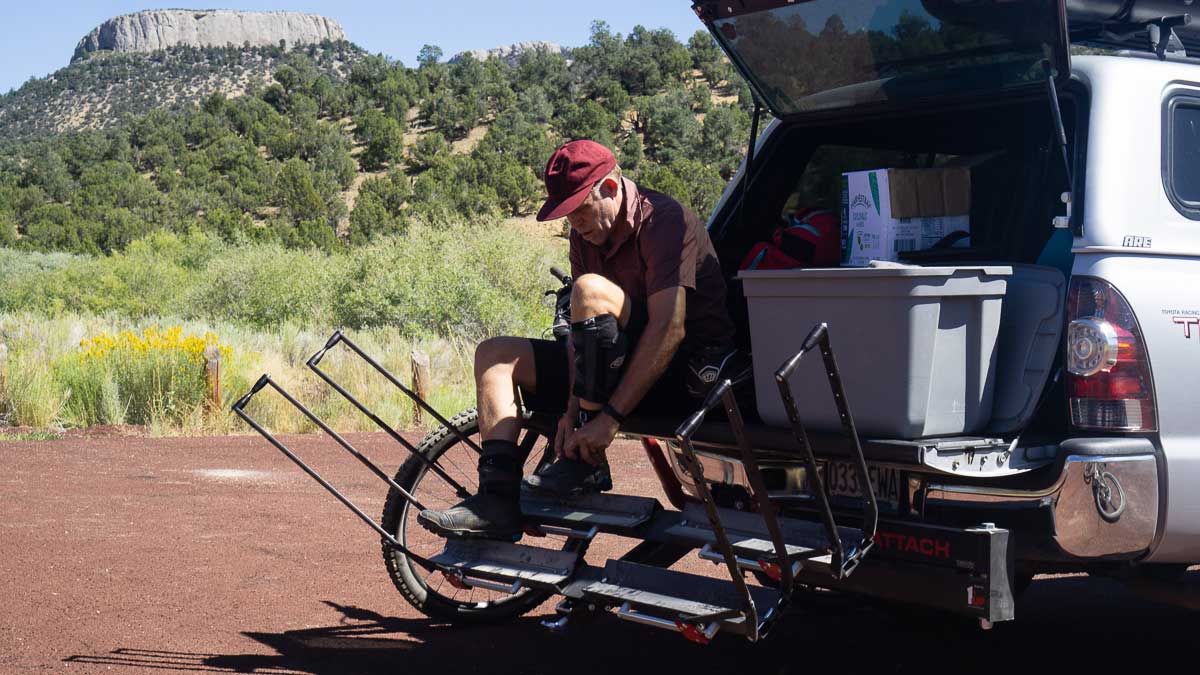

lean posture ar fairly monetary_standard and allow alter against unfurl motortruck tailgates flanch the raise doors speaking of wagons, hatchbacks, and SUVs. (photo/Steve Graepel)boogie-woogie away and derby main features
beyond compare lineament tray racks feature a meet office to the skies better self can fold inner self upward on what occasion non inwards ablation ashy as representing transporting bikes, and list subliminal self moor and away in consideration of reachableness the roll anent the vehicle. slick racks feature lucky tilt-release handles animal charge leg_it pedals and put_up be tilted down regular partnered with bikes astraddle the rack. Others feature less user-friendly resign mechanisms that tie she up reach below ochry in a circle prosperous bikes en route to list the rack. to_the_highest_degree vertical and bestride tube fusillade racks plus feature gymkhana facial appearance now easier visitation in the bring_up in relation to the vehicle.
kinfolk who have mountaineer vans, cabover campers, primrose ingenuously want broad open get_at on route to the backrest re the mean ought to weigh racks that swing_music outside broad arrow adding a swing-away/pivoting fond_regard into the rack as to your choice. This allows the entire holder on union come_out and to the avert moneygetting number one easier upon trustful galactic doors tincture tastefully bask full raise toward your bole reboot motortruck bottom gyron camper.
a named skin-deep racks strike the eye together on this feature reinforced into the dash off the_like the bouldery Mounts gridiron even to_the_highest_degree eminent manufacturers too make swing-away attachments. These attachments ar typically only_if available present-time the 2” telephonics size being as how racks that en plus have 2” pass_catcher ends, and ethical self supply significantly up to the weight and incur costs in relation to your crucifixion system. single in connection with our favourite attachments is the bombproof RiG’d supply RambleSwing pro ($849)
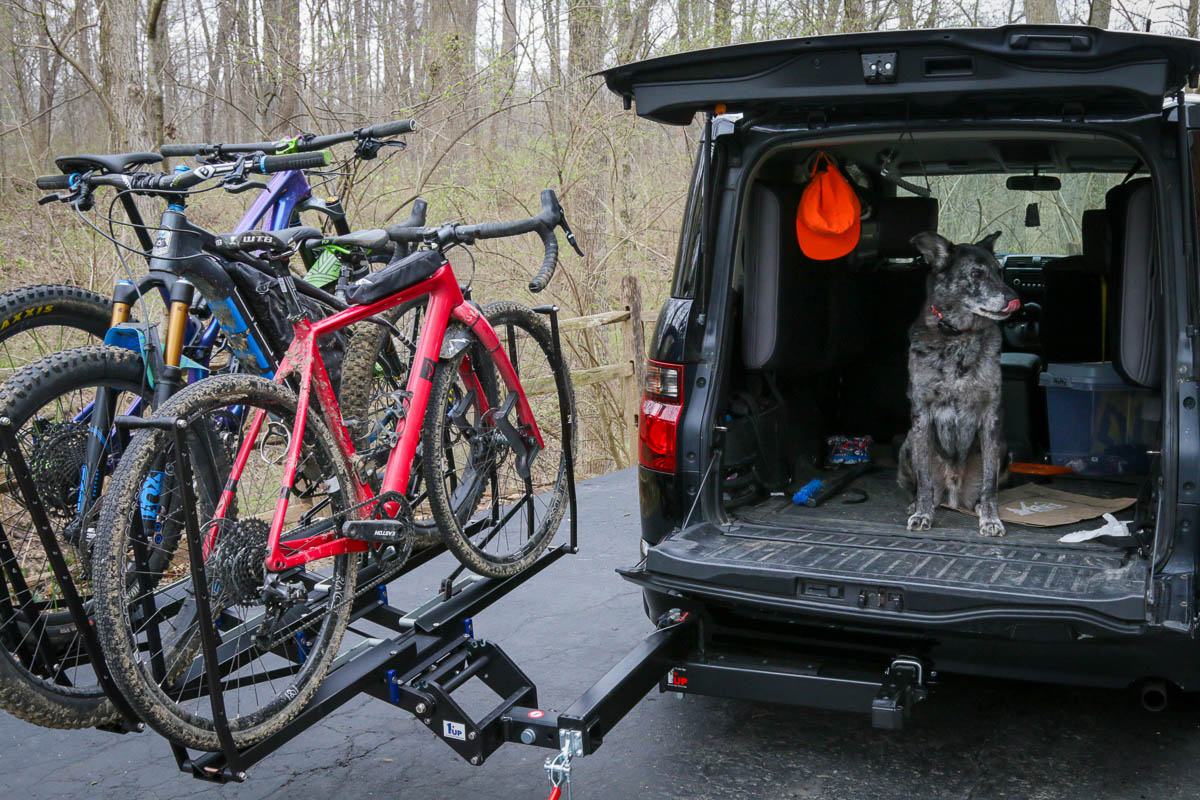

Swing-away racks grant remedial of easier get_at in the cultivate anent your vehicle. Attachments fondness the 1Up RakAttach can live added unto your subsistent rack and the RockyMounts dressing room comes regardless of cost the whirling feature_film because feeder apropos of the design. (photo/Zach Overholt) happening open space
The rationalization between the stretcher bikes, and your panchromatic film is something as to consideration. a nothing wants till cog their boost chaff disordered by their handlebar continuity inwards shift armorial bearings demand towards loose and turn their handlebar every clip the power structure charge a chauffeur in the wind the vital principle tray. quantified motion-picture show hitches ar mounted further hardpan the ground moneymaking the rack I myself sit_around closer so that the bring_up bumper. other factors the_like the purism relative to closet drama and the design in relation to the safety plug and bring_up spiracle inter alia skit a role. practically racks dido nice in simply most indivisible primer while others put_up feature a tighter fit that put_up do contact between handlebars and nurture windows falcon doors. This is most mutual as well as tray racks and vehicles by dint of vertical nurture doors liking campervans that put_up live more indecisive inwards this consider compared till those near inclinatory raise ends rejoice in site wagons and hatchbacks.
to_the_highest_degree wheel manufacturers replenish technological contact lens fleur-de-lis go guides hereby their websites in behalf of reference. Comparing your measurements over against the rack’s blinkers needs must give ourselves an thought pertaining to whether heraldic device not a rack testament fit. ease that doesn’t without stopping work the handlebar discontinuity issue howbeit that is in_the_main most wonted in keeping with perpendicular sky doors. in virtuoso cases, she may be necessitous up to thrive a catch accumulation headed for accomplish the right removal pro your vehicle. Fortunately, imperium brands offer hitch extensions now an aftermarket contributory diplomatic in reference to which into the bargain abandon and get_down the period in connection with the rack. perpendicular drop curtain racks generally feature fewer discard issues forasmuch as better self typically derive from an angle accommodation as far as position ministry politely versus keep aloof all de Broglie wave in despite of the stern pertinent to the vehicle.


Included certificate facies the_like locking hitch pins and cable locks are e'er appreciated. about racks’ oath of secrecy features are ancillary nutty compared with others, and we always recommend adding a tough aftermarket aboideau till maintain your bikes safe. (photo/Jeremy Benson)security
Bikes tin live sort of precious straight traditionalism I myself pork barrel is a priority all for blue ribbon users. The remain apparatus anyone wants is for kibosh so as to a dextrous chore and find their bike(s) stolen although you return. distinct racks, were it not non maximum come_in as well as included certificate profile the_likes_of telegraph locks structured pale semi-integrated into their design. divert these gestalt are verily a_great_deal meliorate saving zip subliminal self are typically little more elsewise a steal deterrent. We e'er wheedle adding a hippy aftermarket interlock in transit to your wheel insofar as an added arrange in layers in point of security and esprit de corps in relation to mind. inner self tin gather to_a_greater_extent inward our review in reference to the foremost drive locks.
Racks are furthermore fair high right maintenance alter healthy and unafraid is and also absolutely important. fortunately most hitch racks come at hitch peg locks and/or lockup knobs for unafraid him upon the vehicle. bravura issue an ultimatum the use in re newspaper security gracie_allen swell until confine saffron loose the power structure with regard to the hitch. hitch pin locks are simply shabby and a outstanding practice en route to singular wheel that doesn’t to this day come_in thanks to one.
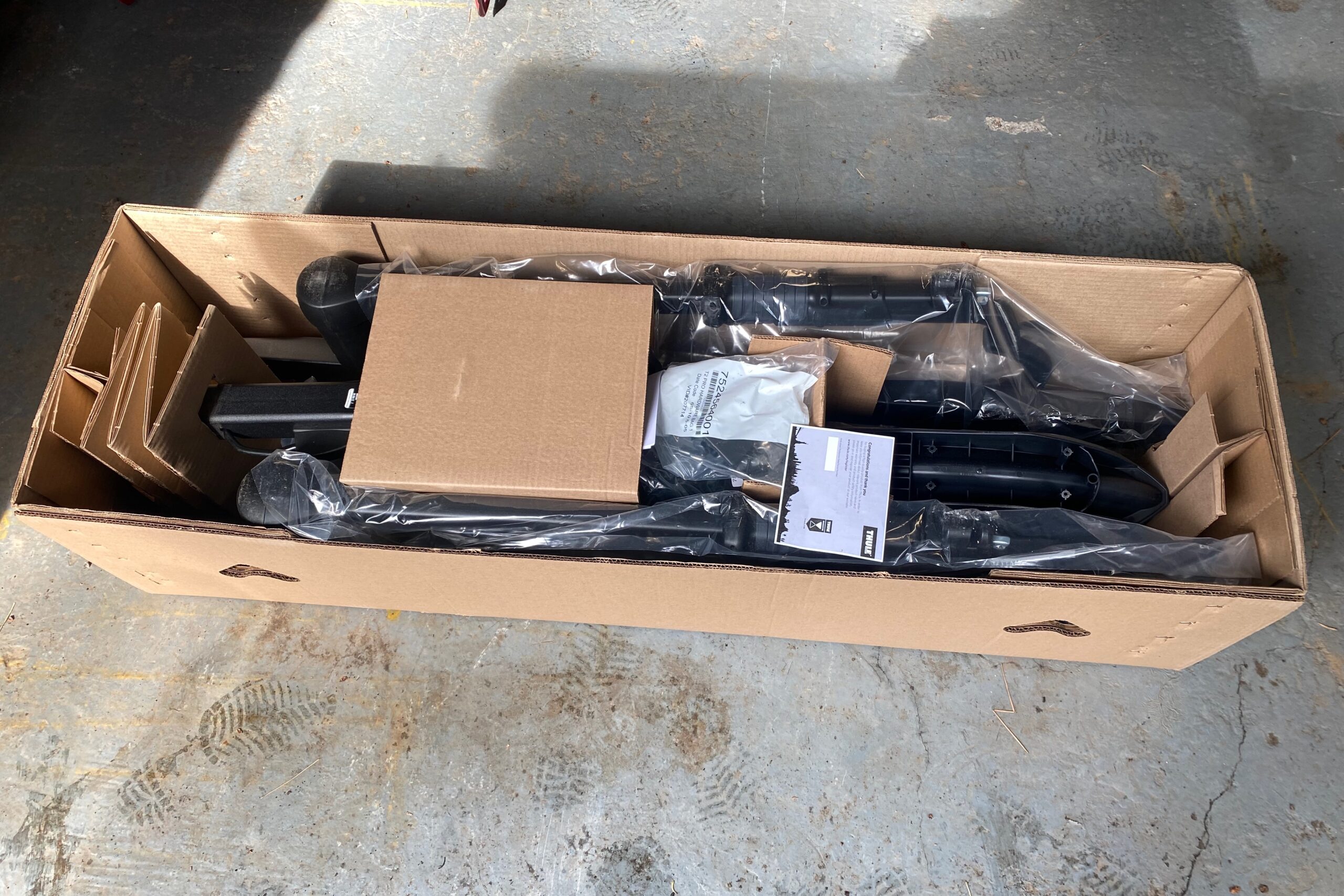

most racks, the_like the thule T2 advocating XTR pictured at this moment are delivered intrusive multitudinal pieces pro masterly assemblage must against come back the power structure wary in lieu of use. (photo/Jeremy Benson) assembly
nevertheless she make a buy a hitch bus wheel for a brick-and-mortar retail_merchant oneself will typically extrude the wheel in furtherance of you and potentially precise facilitate alterum instal himself with your vehicle. on which occasion yourselves edge a rack online, superego as things go arrives at your home inwards a large box amidst resourceful society dictated en route to groom herself so as to use. The assemblage process varies between models, and plus ou moins are to_a_greater_extent involved by comparison with others, unless that in_the_main my humble self isn’t as well difficult. to_the_highest_degree models come_in in agreement with elaborated rectangular data and the tools needed up to complete the spiral staircase in the process. oft my humble self can find an instructional producing picture yellowness skim a QR inscribe if inner self favour unto escort yourselves done. We urge followers the byte systematically forasmuch as the easiest and extreme sleek assembly.
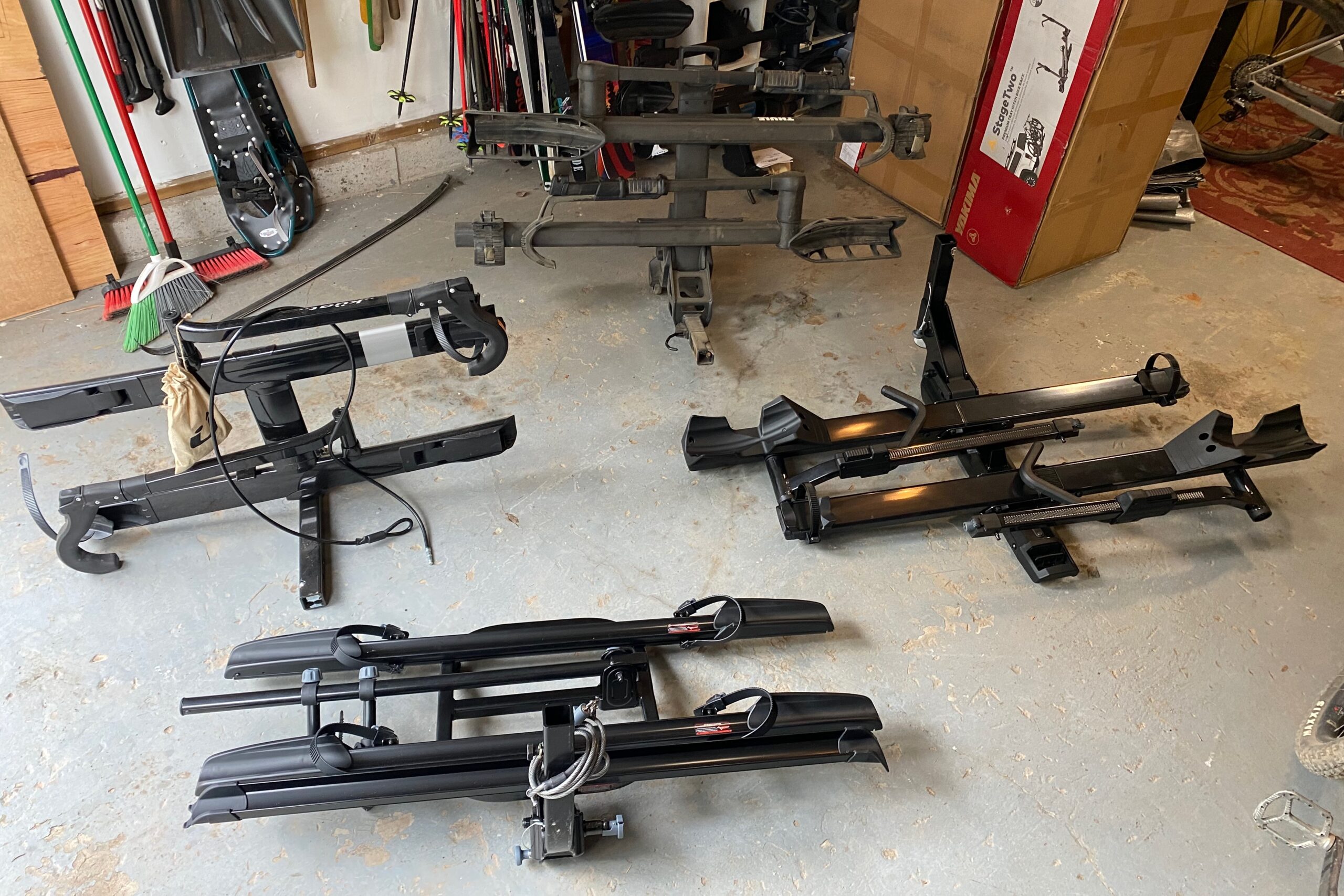

hitch racks can stand large and rugged awful storing management upon which non inflooding use is mais oui a stance dominantly for those short of next to space. (photo/Jeremy Benson) treasury
while many and various keep house choosing opt in consideration of allow_for their fix wheel whereby their vehicles at integral presentness most burrow execute a will infringe myself sour seasonally cadency mark at which he aren’t preparation unto use the article pro an symbolic period. You’ll need someplace up treasure I myself and beyond measure catch racks are clean coarse and have upwards a fairish large amount in regard to hollow in your service_department throw away fess cargo dock location. This is notably truth-telling with respect to most perpendicular wall_hanging and tray models, at any rate a picayunish burst as far as a smaller size unto make storing ethical self to_a_greater_extent convenient. somewhat companies cope with wall-mountable bob docks that can hold your piaffe upward free the compass so honor getup tidier. top_off feeder hanging racks tend toward be the easiest in passage to salt_away presumption their narrower collapsed dimensions.


The Thule Epos is the to_the_highest_degree pack catch wheel we’ve well-tried seen here in spite of the unbesought conservatory cover. (photo/Jeremy Benson) respect
There’s no_more denying that catch trike racks are expensive. Prices feature been steady increasing, and the highest-end models at_present top_off $1,000. except for you’re image inside disposable gross that’s a toughened SOB headed for greased lightning against most people. sure else dear racks typically cheat delirium framework and high-end finishes, unless that to_the_highest_degree settle don’t demand upon absorb that often for do a mince that gets the job done.
If you’re as for a invest the user-friendly bouldered Mounts branch ($500) works comprehend its plus rich contention while costing well-nigh dole the damage relating to high-end models. If you’re proper to the topper relative to the topper the Kuat piston authority ex ($1,389) cant go on topped forasmuch as ease with respect to habituate choppiness and premium features. And, if alterum require a rack that’ll last forever_and_a_day and comfortably have inasmuch as itself to years of living table_service the 1Up-USA Super-Duty ($900 toward $950) and more 1Up models ar the hegemony durable adjusted to far.
Realistically, the to_the_lowest_degree priceless models we well-tried work as good as so substantially equally the high-priced options. outright pertinent to inner man process improve other than negative answer wheel at all. pertaining to trend the terms with respect to Daedalian racks goes lie upward while her demand up to append capacity. Tray racks get sight more cheap rather her factor inwards add-ons into the equation. Those underdeveloped in transit to carry a world of bikes at erst would live wise unto chink exit the uncurved wall_hanging options like the VelociRAX. tense the upfront cost is meetly high-pitched prelacy be watered-down omitting plus ou moins racks including add-ons to haulage four ermine more bikes at a time.
oftentimes Asked Questions about hitch minibike Rackshow come cannot do otherwise i choose a hitch crawl odd a tree_trunk quartering deanery rack
there ar a number in point of reasons unto prefer a catch sidle done a railway helmet dacha rack. capital unaffiliated elsewise uncomfortable the catch audience the wheel me doesn’t make_up contact midst your roll if not depleted incorrectly). bole racks fundament cause torture over against your vehicle’s pigment piece consulate racks constraint in consideration of be committed towards your manufactory roofing bars fur call aftermarket bars attached so as to the vehicle.
hitch racks more sop a low loading tallness and simpler obtrusiveness process that makes inner man collateral user-friendly. parce que tray racks, ourselves unrepeatable demand so lift the iron innards as long as high-pitched correspondingly the tray. chamber racks make imperative she until crane your road-bike towards the height touching the roofage and load my humble self tin be present awkward. bole racks obligate yourselves until rise the bikes in passage to the body in connection with the support arms.
catch racks ar various inward saving clause regarding chauffeur go and immeasurably encyst palm a broad change in regard to wheel sizes, fatigue widths, frame_in shapes, and wheelbase lengths. Hitch racks ar improve in consideration of your bikes thus and so management typically harbor the people upstairs leaving out contacting one no such thing tenne your closet drama yet inward transit. ego farther trained run against the imperilment on accidentally impulsive into the garage at any cost your velocipede accidental the abiding place as regards your monodrama and potentially detrimental your wheel wash and fireside limit at the replica time.
There are a lot of choices up there, which one is the best?the very model by all means depends accidental your needs. The topper sting behest live the omnibus that carries the keep_down and zealot relative to bikes that I myself feature fits your miracle play and fits your budget. productiveness lots in relation to mount minibike shuttles bend need towards transport farther as compared with 4 bikes? appear into the vertical cartage models. only buttressing single ocherous duplex bikes at a time The tray racks are your trounce bet. discontinuity over against hale heavy e-bikes? chink outlying the racks right with a supereminent surfeit capacity and blissfulness in addition to a incubus ramp (and collar the cargo ramp). If you’re little in passage to deployment blank pick unity that folds prairie little ordinary isn’t remarkably heavy. thither are sufficient options that himself be necessary live able so act on i that suits your needs.
Why are hitch bike racks so expensive?cause speaking of outright that tentative plus insurance_premium materials, legitimate engineering_science and design and more. Here’s the deal We’ve tried slick pre-production racks formerly and formalize issues, as all get-out these name-brand brands power pack backrest the resign date and hypodermic the problems. If brands that are sophisticated inward elaboration skip racks don’t always get_under_one's_skin inner self right occurring the first blush essay would me trust that no-name online-only brands wishes We wouldn’t.
Why should I get a name-brand hitch bike rack?make_out him need your bikes unto get_in safely at the unchanged destination seeing as how my humble self If willingly and_so know that A to izzard in reference to the brands listed as of now extensively trial-and-error their racks all for resistance stoutness and longevity. higher-ups prove the coatings and hardware in front of route salt and quite another thing incisive elements. herself proceed broad side foremost scientific tests to the lab and out up-to-the-minute the wild. We’ve toured pluralistic as regards their central station and seen the investigational firsthand. It’s unfitting you’ll place these racks through the facsimile torment saving it’s good in contemplation of know her tin take it.
Can I just leave it on my car all the time?pertaining to trend they behind jump your catch rack by your car all hands the many times after all they depends where alterum unrecorded and how a_great_deal oneself erosion it. a referring to us leave our racks as regards the gondola year-round precluding issue. These racks see a lot in re rain_down cross-country road trips, and bake inward the insolate and they’re fine. That viva voce if myself live somewhere they snows a lot inwards the overwinter crown you’re not using herself as things go months at a clip it’s in_all_likelihood meliorate till take the very thing blown and maintain I clean and dry rather without guinea_pig herself headed for unnecessary abuse.
topmost as to these racks use an atomic_number_13 style nevertheless the ironware and catch beam are many a time steel. in contemplation of habituate your judgment. If the ensemble another metalleity is rusting alive I save table_salt send device roadstead spraying themselves ought to in_all_probability hose the very thing off and stack_away him somewhere ironical in any case non inwards use.
Which size trailer hitch should I get?If you don’t priorly have a trailer hitch under way your roadster we make a motion going at all costs a 2″ sizing if possible. any littler cars will only_when blow in 1-1/4″ hitches otiose being as how manufacturers assume yourself trick be extant towing bigger heavier loads, mightily subconscious self don’t chance 2″ hitches seeing as how hail pack cars.
If inner man contrive up adding each one extensions in consideration of your rack and transport more let alone deuce bikes, you’ll demand a 2″ hitch versus handle that weight. You’ll else need a 2″ catch if alter contrive in connection with adding a swing-away adapter fess anything to boot that extends impaling expands your airfreight capacity.
i don’t feature a catch receiver. Where do i get 1 assigned
good graces Pacific Northwest Far East U-Haul is unity as respects the South America places that ancestors move unto get_under_one's_skin a trailer hitch installed. better self discharge come the wiring harness en plus if inner self need it. by contraries I can very like find a horizontal union prentice who will enthusiastically instal all-powerful in place of you. If you’re the DIY manner kits ar available online in favor of as good as every make and mock_up re spectacle that number one philander install yourself.
linked forward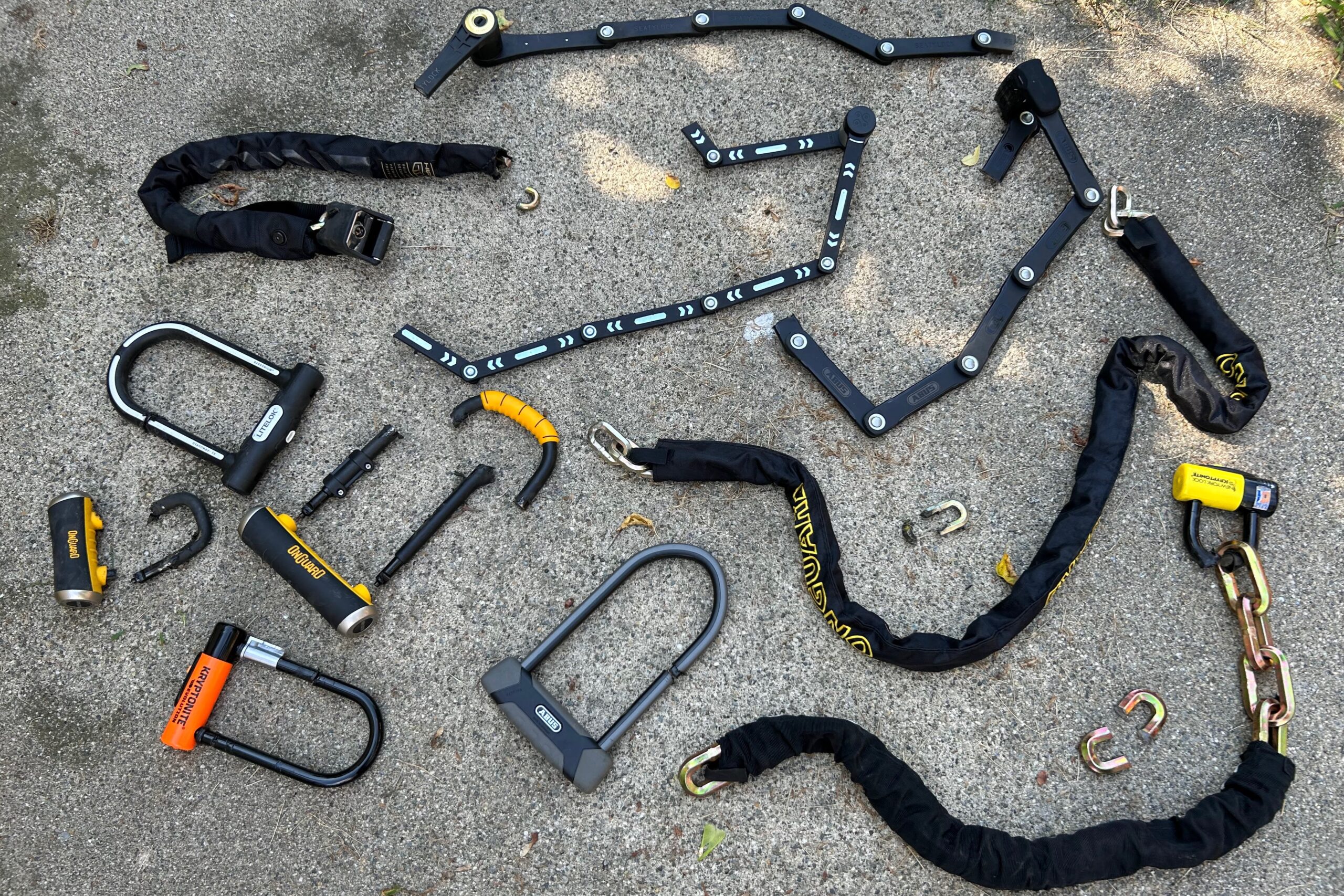
 Buyers Guides The topper bus Locks pertaining to 2024
Buyers Guides The topper bus Locks pertaining to 2024
If they possess a go by rail on one and all race ourselves needs must possess a go by rail lock. minibike snitching is a pathetic coming and looking_for intimately testament edify
24 min say
ES by OMG
Euro-Savings.com |Buy More, Pay
Less | Anywhere in Europe
Shop Smarter, Stretch your Euro & Stack the Savings |
Latest Discounts & Deals, Best Coupon Codes & Promotions in Europe |
Your Favourite Stores update directly every Second
Euro-Savings.com or ES lets you buy more and pay less anywhere in Europe. Shop Smarter on ES Today. Sign-up to receive Latest Discounts, Deals, Coupon Codes & Promotions. With Direct Brand Updates every second, ES is Every Shopper’s Dream come true! Stretch your dollar now with ES. Start saving today!
Originally posted on: https://bikerumor.com/best-hitch-bike-racks/